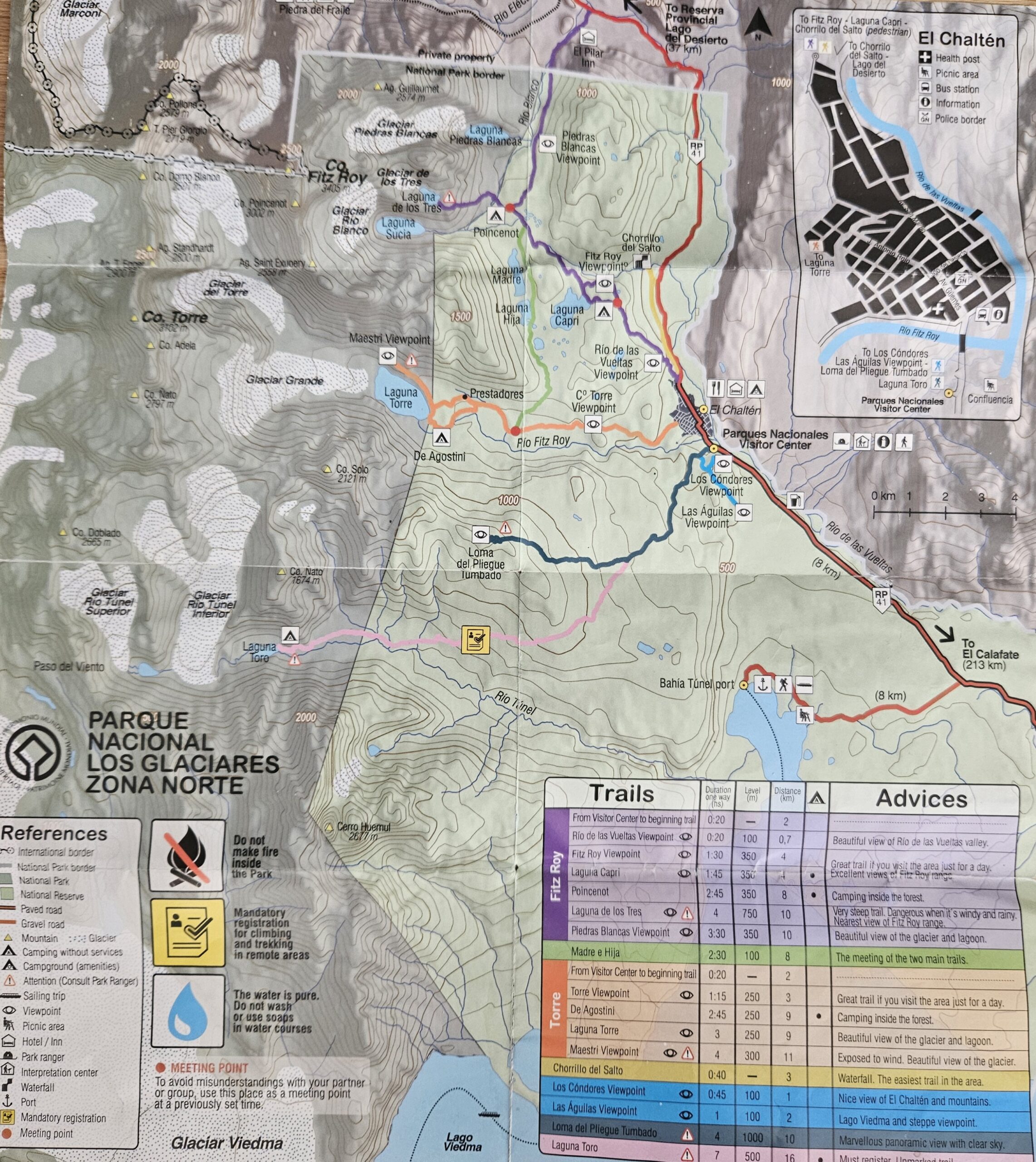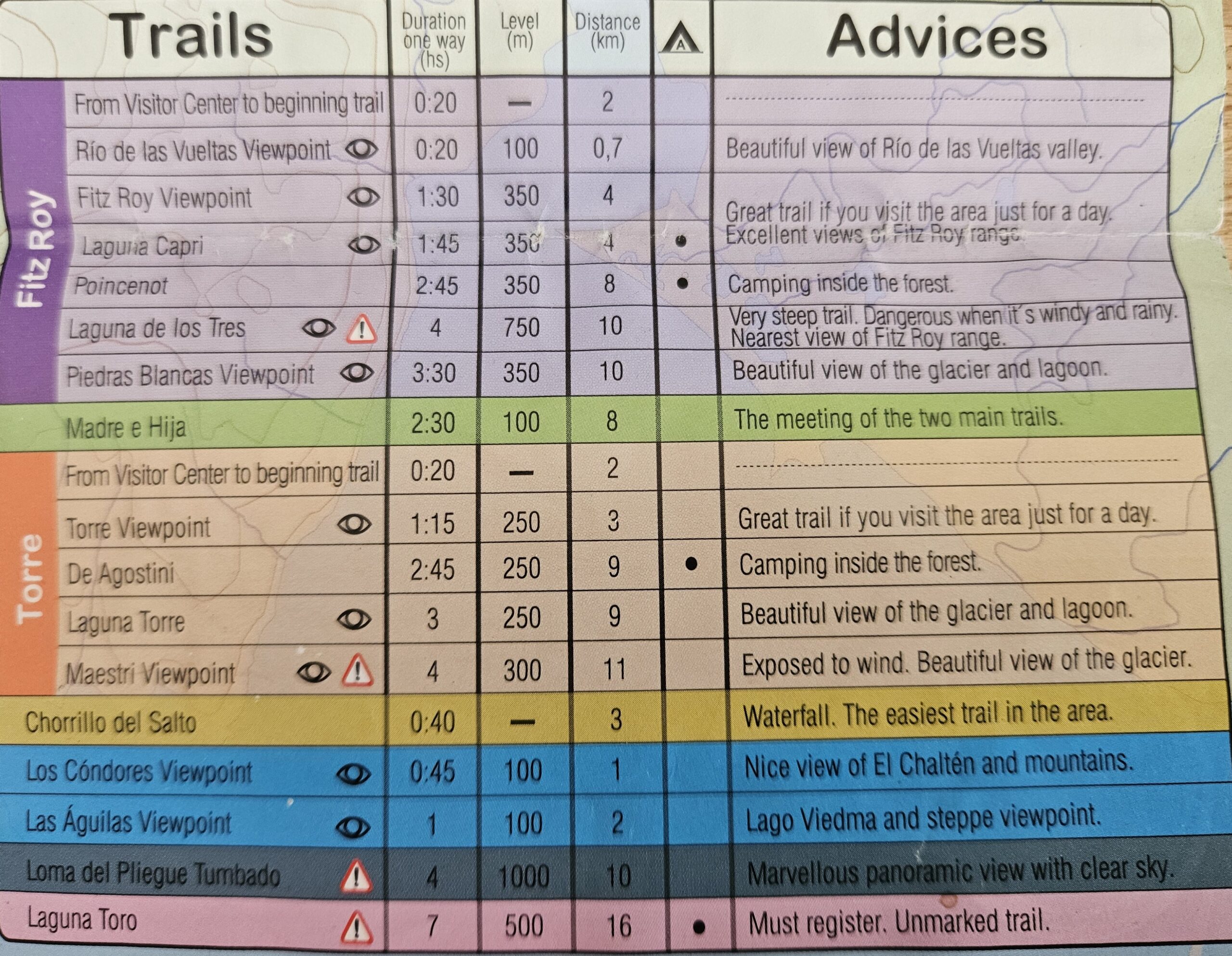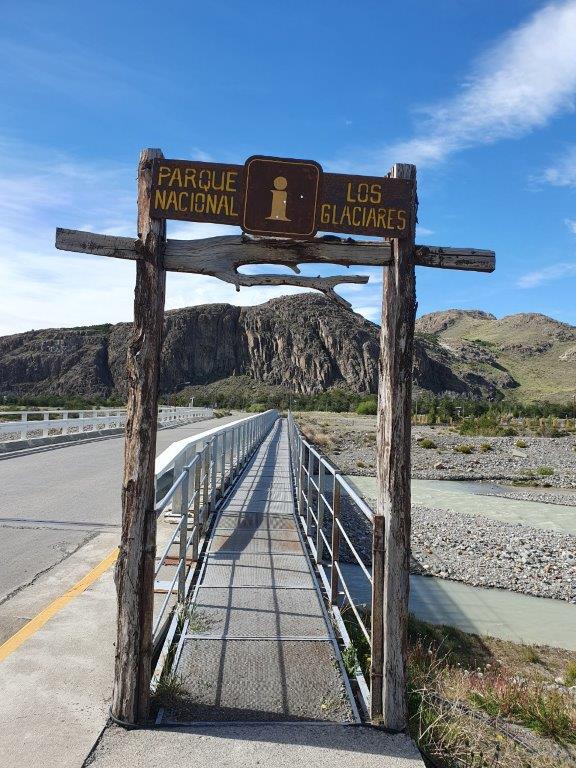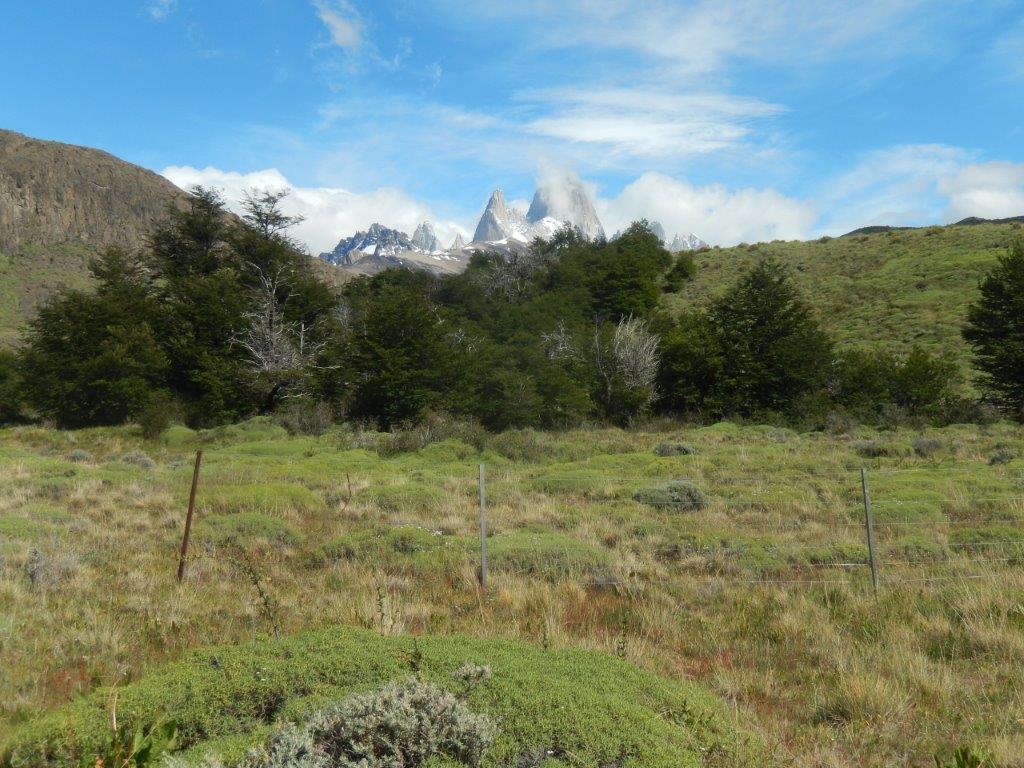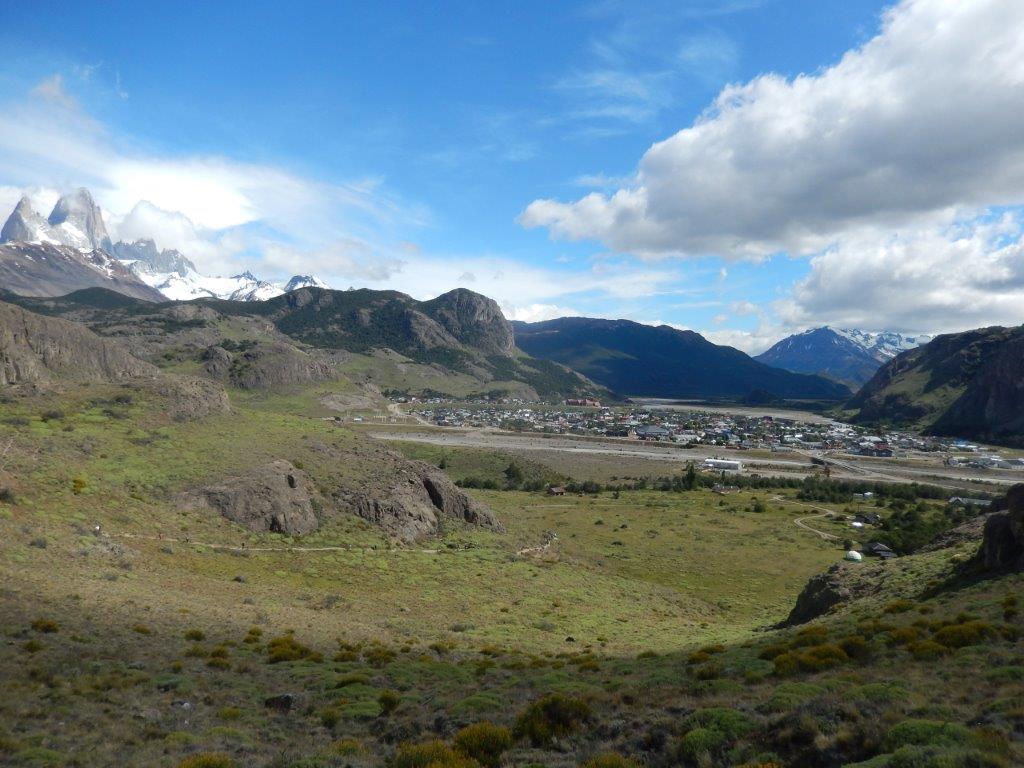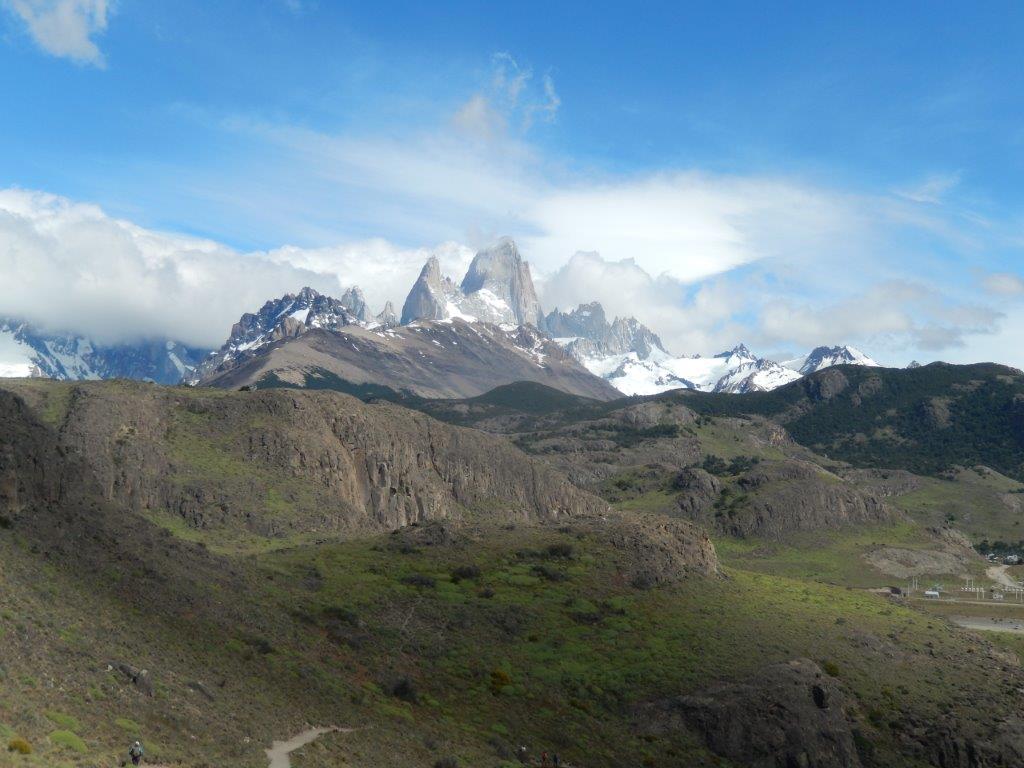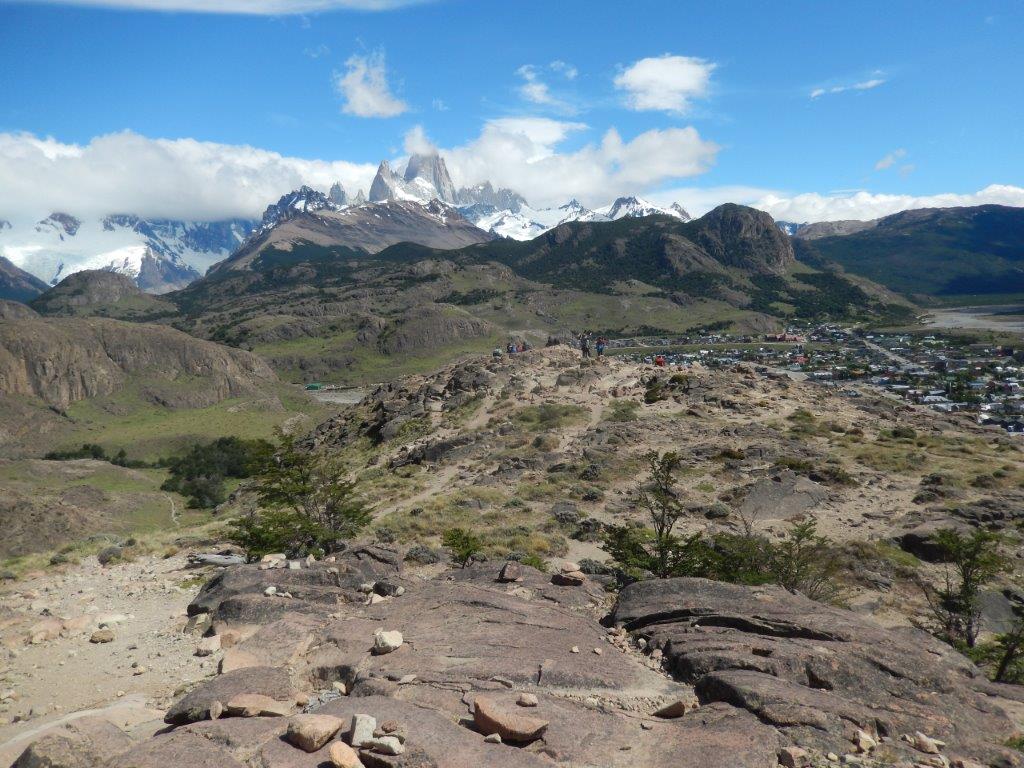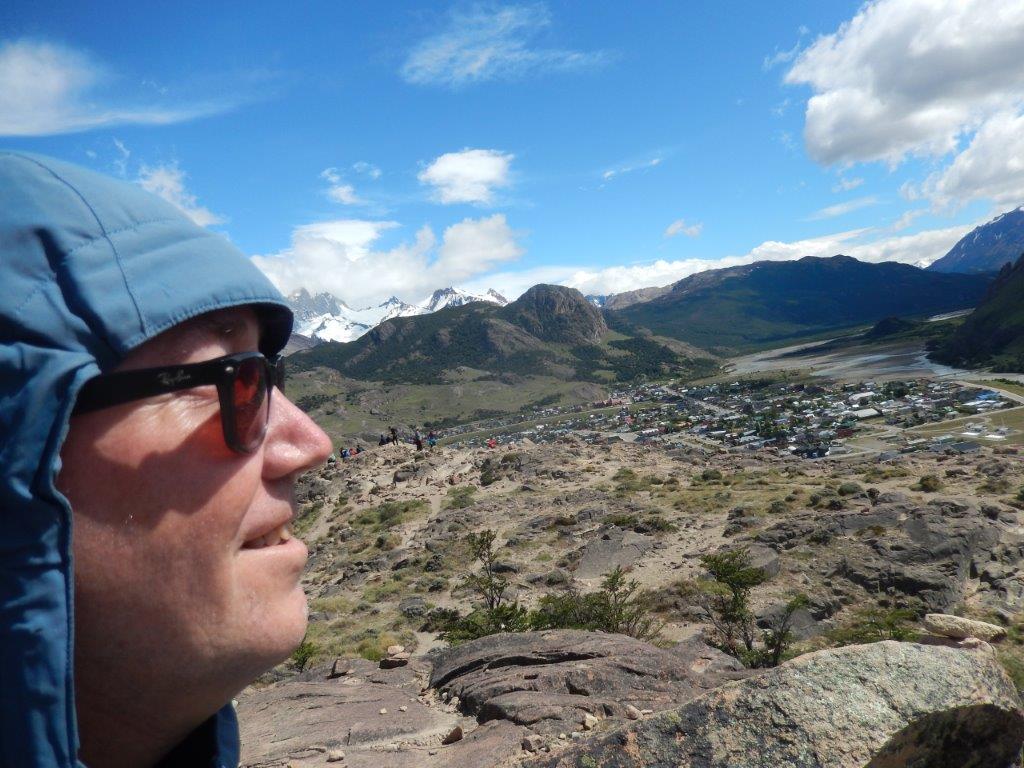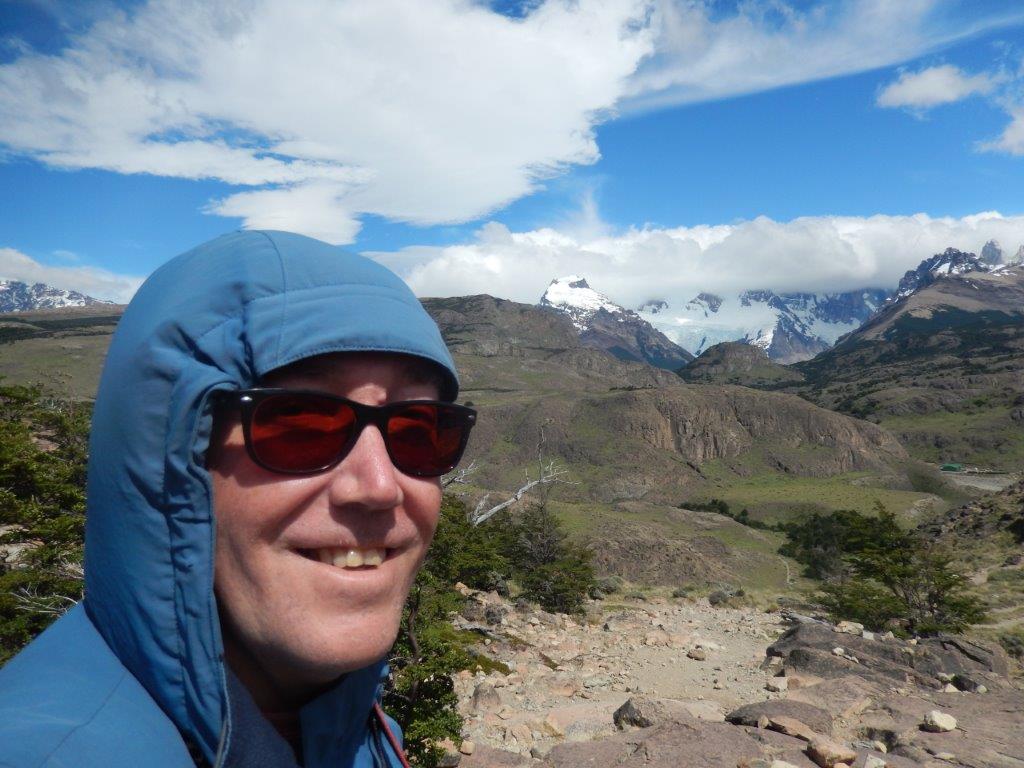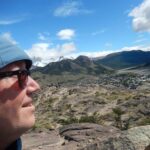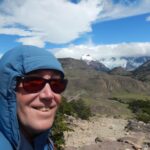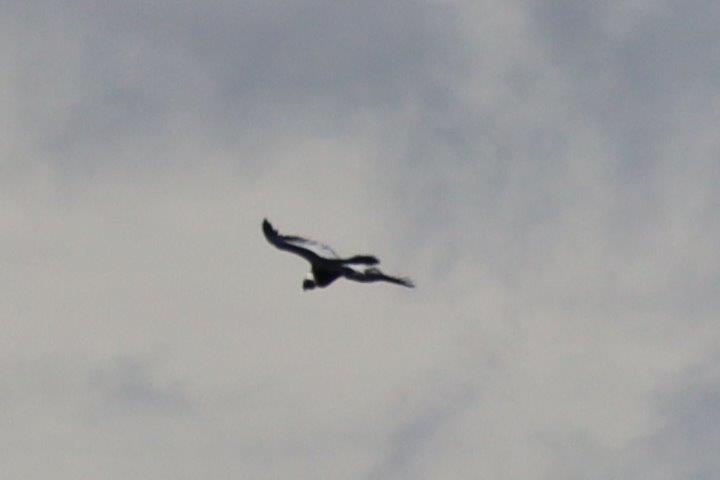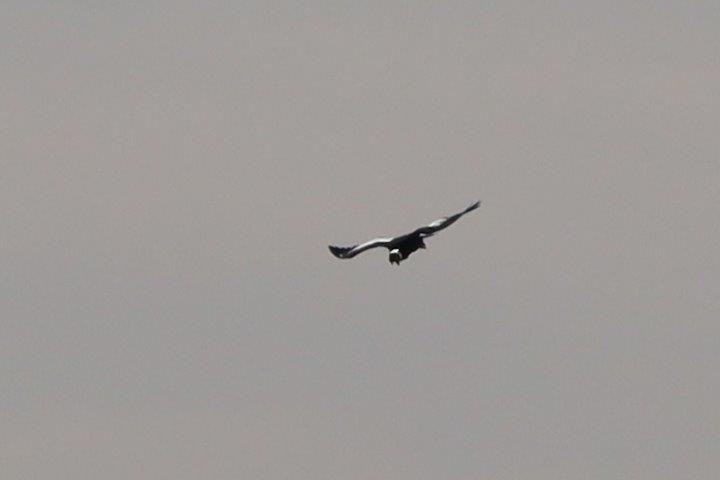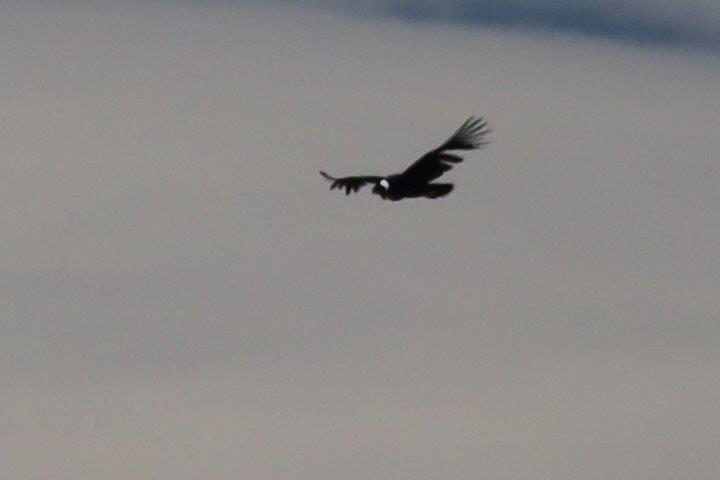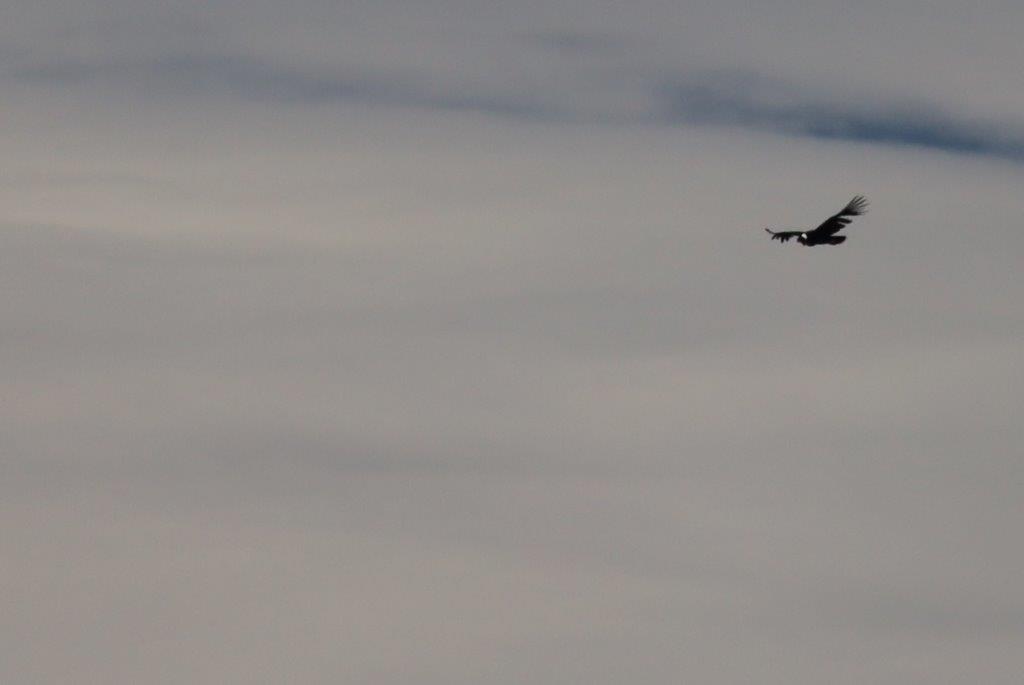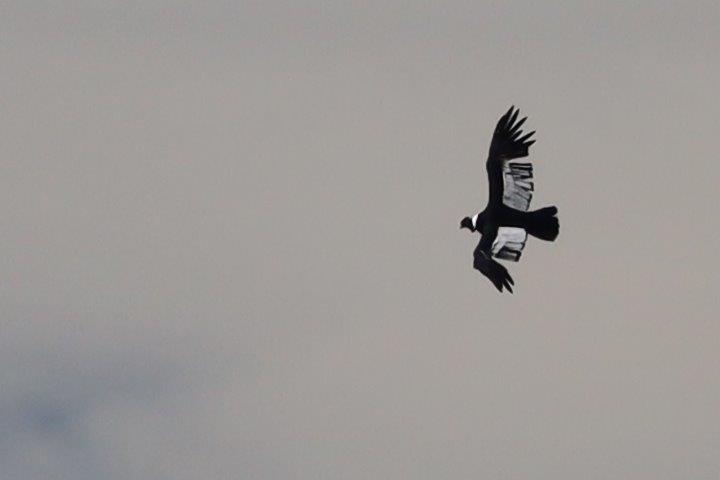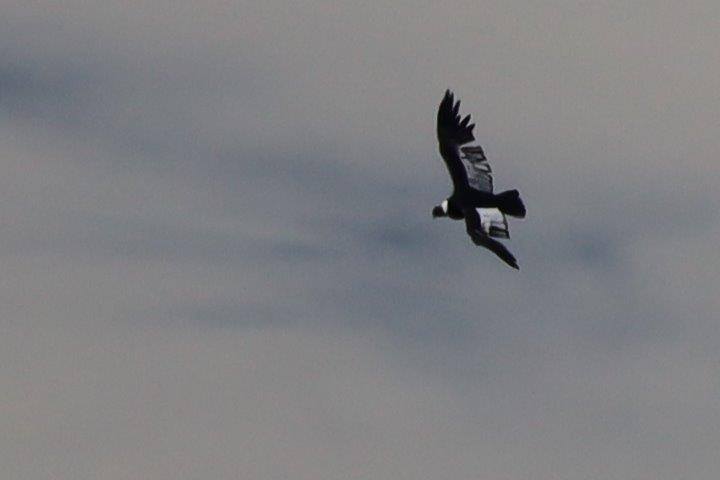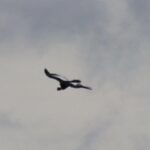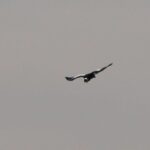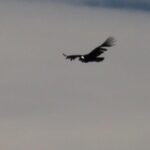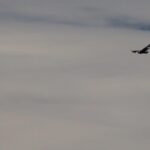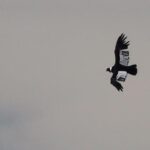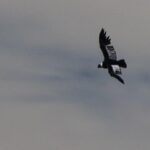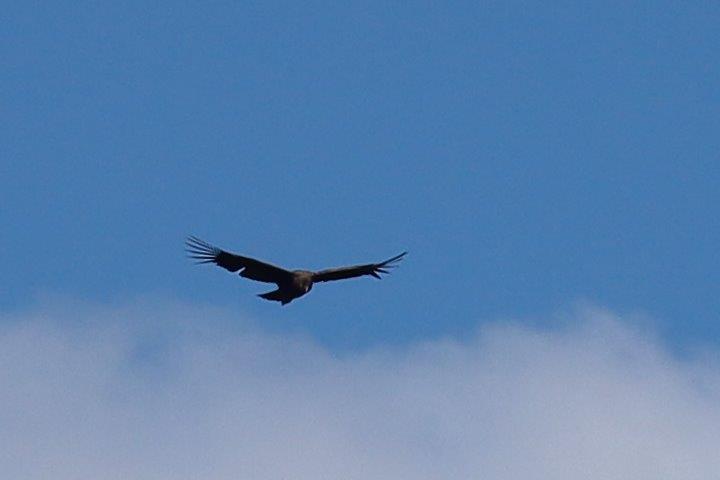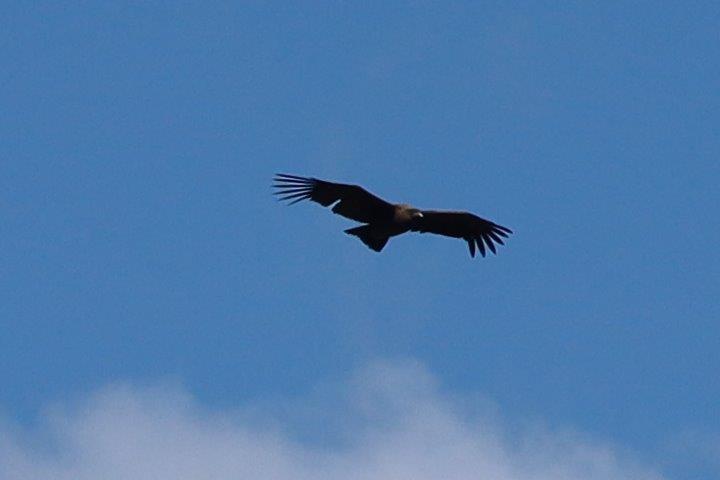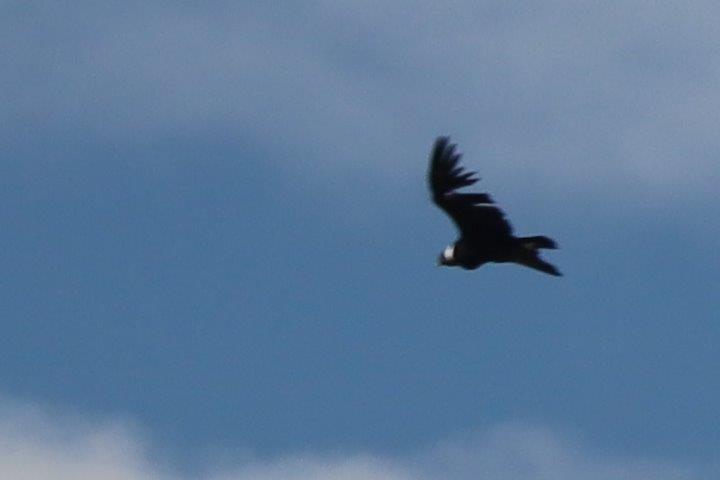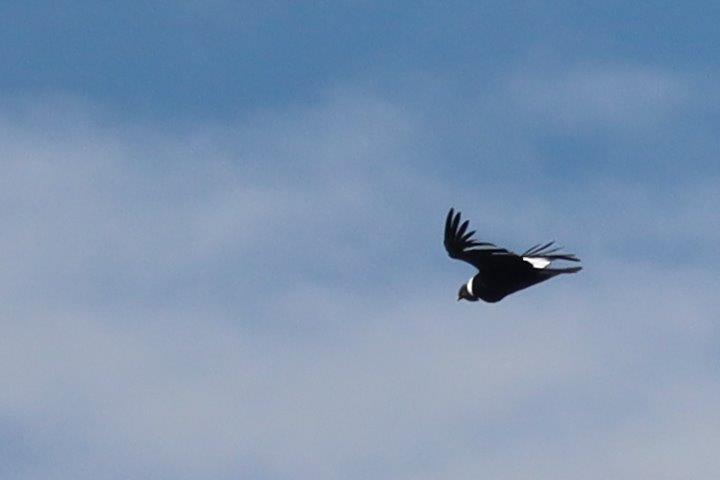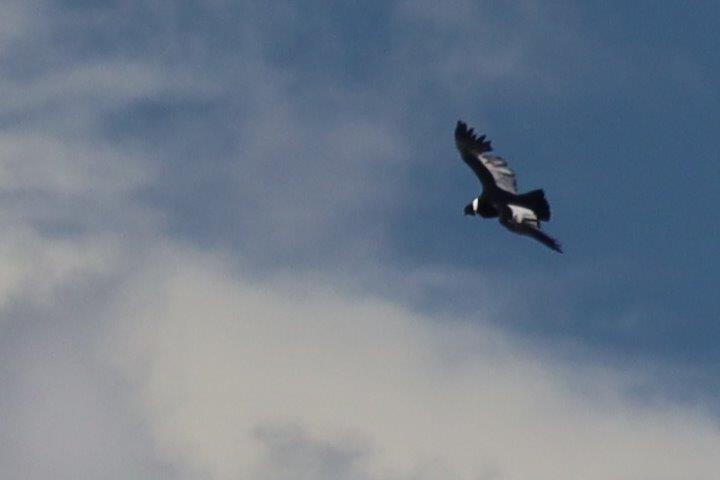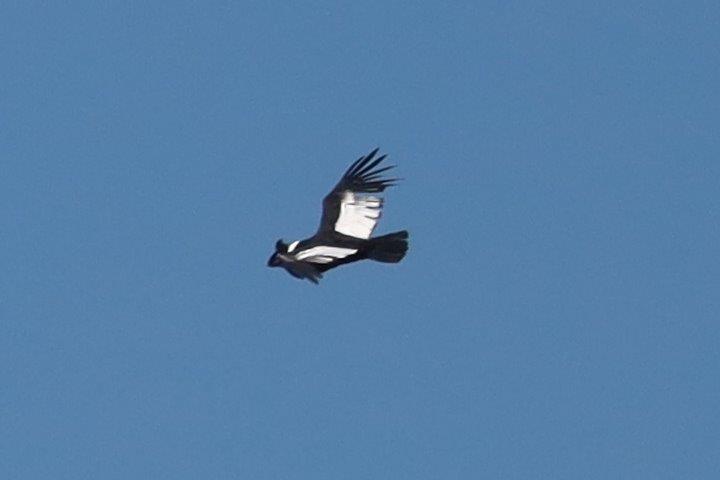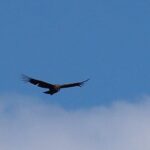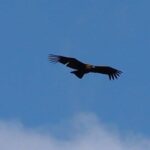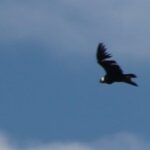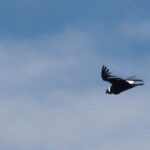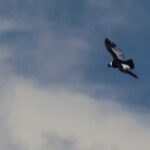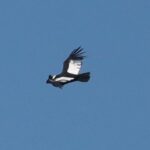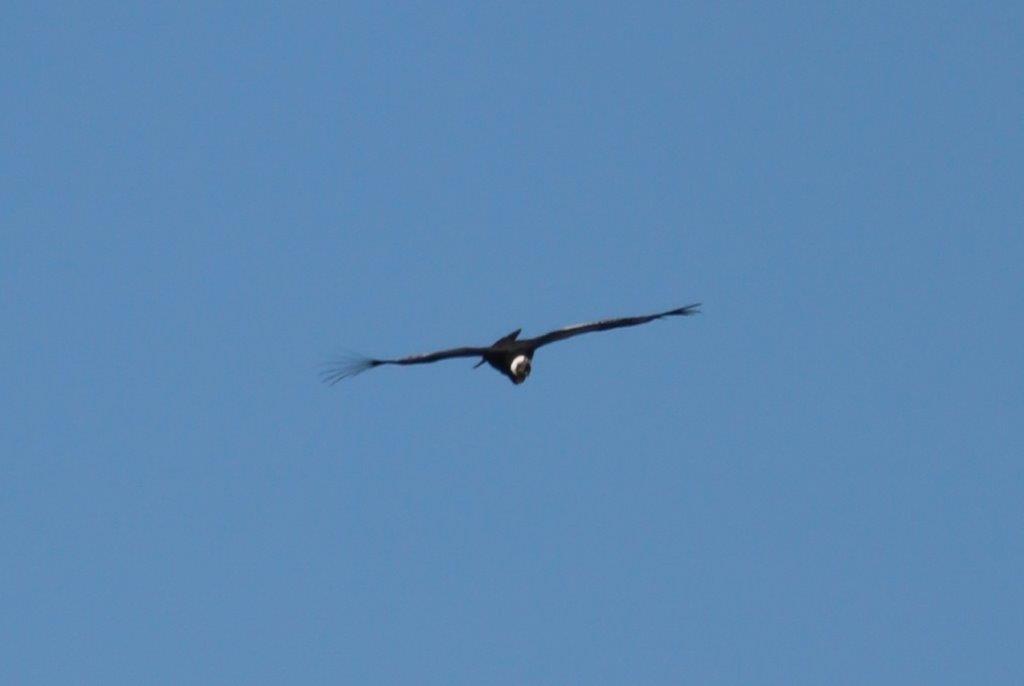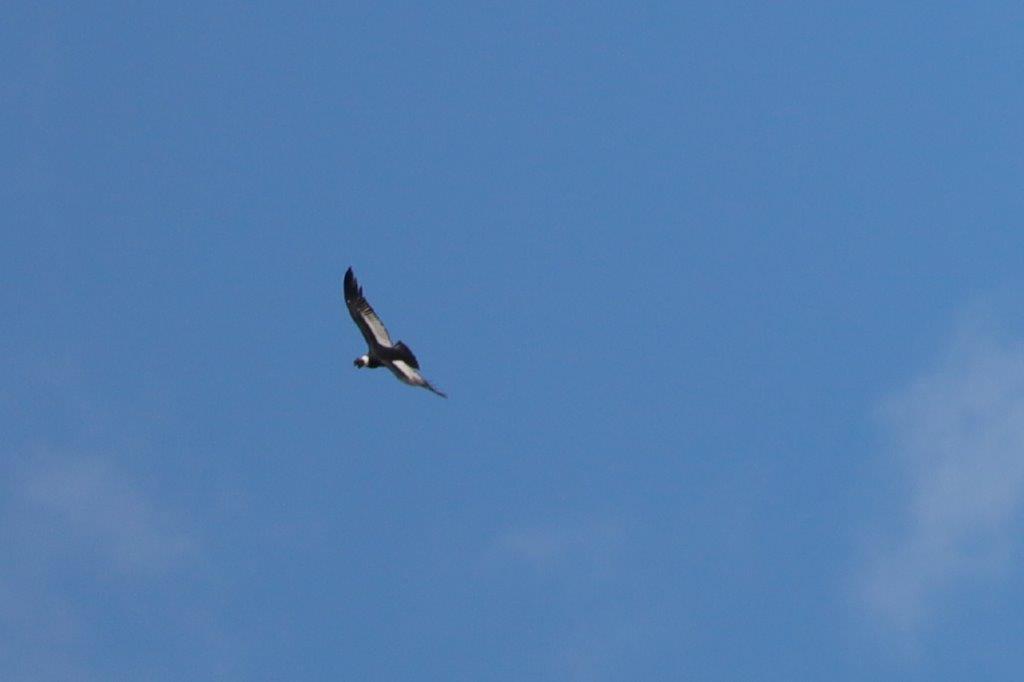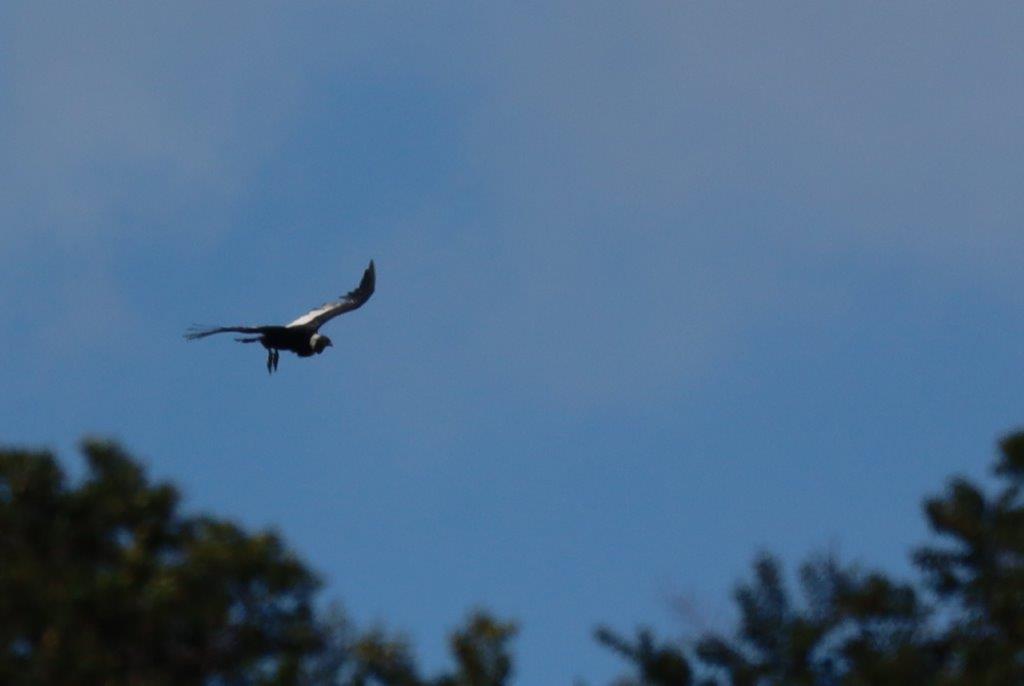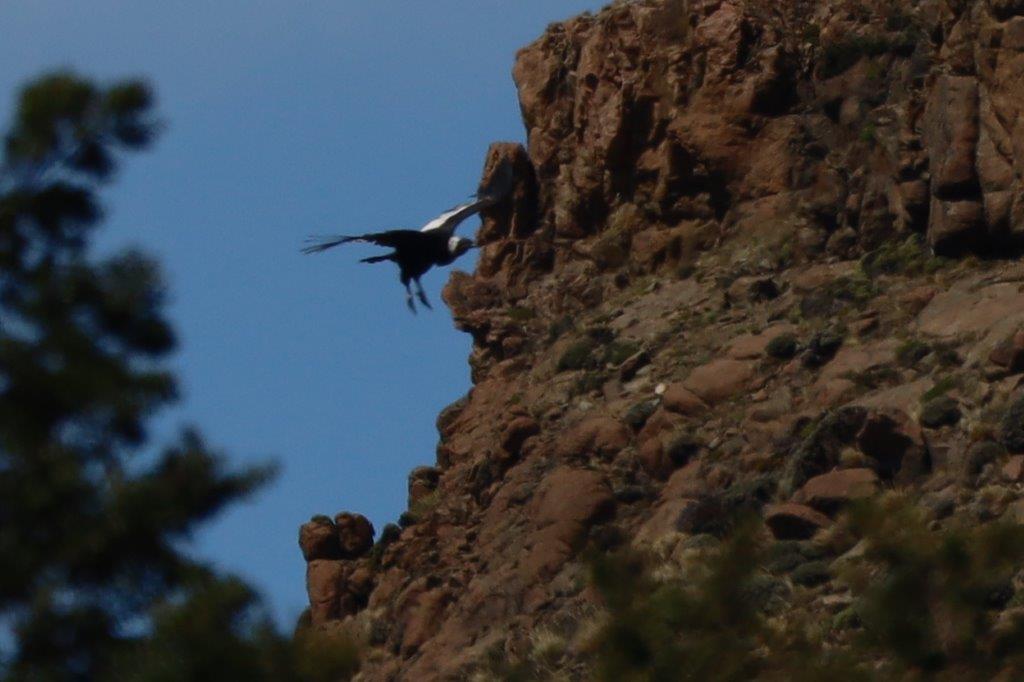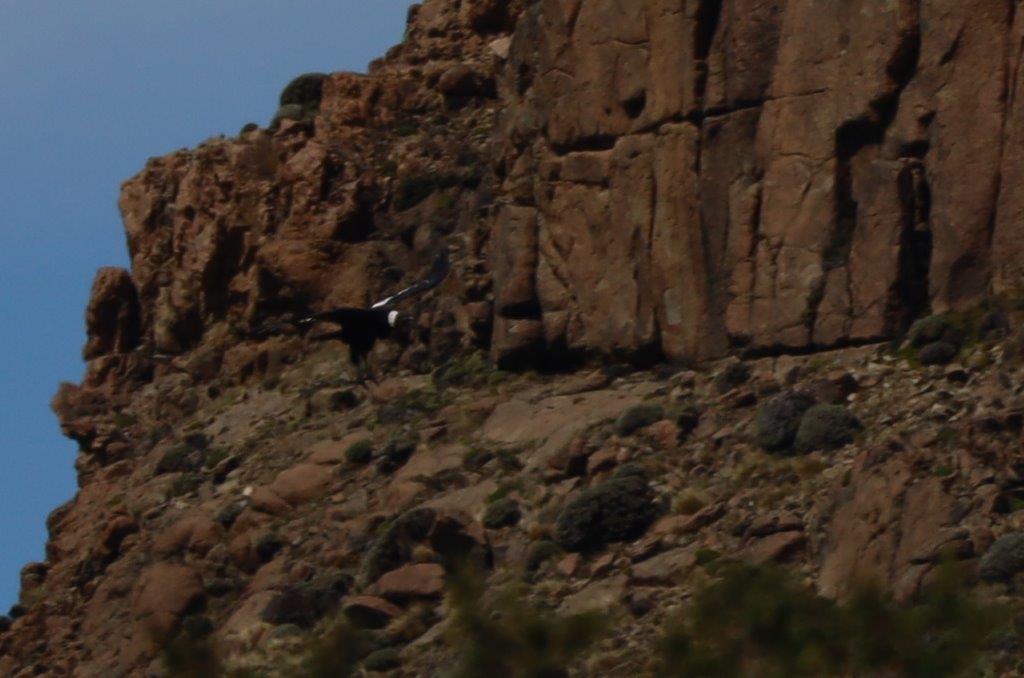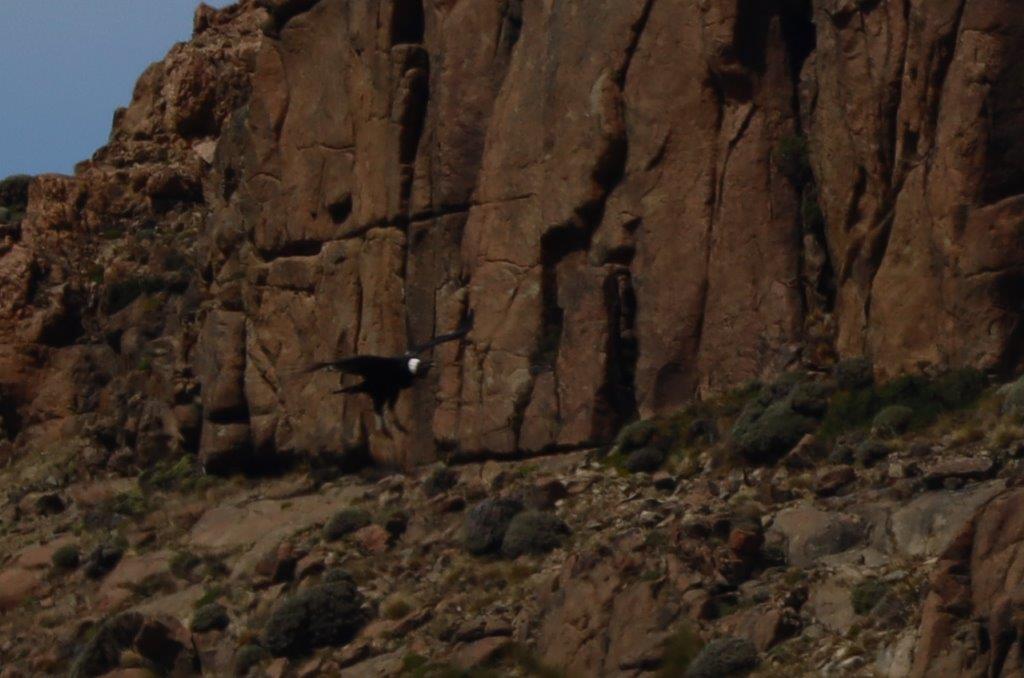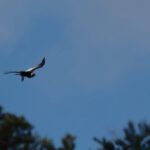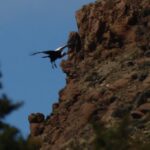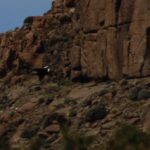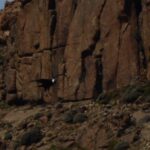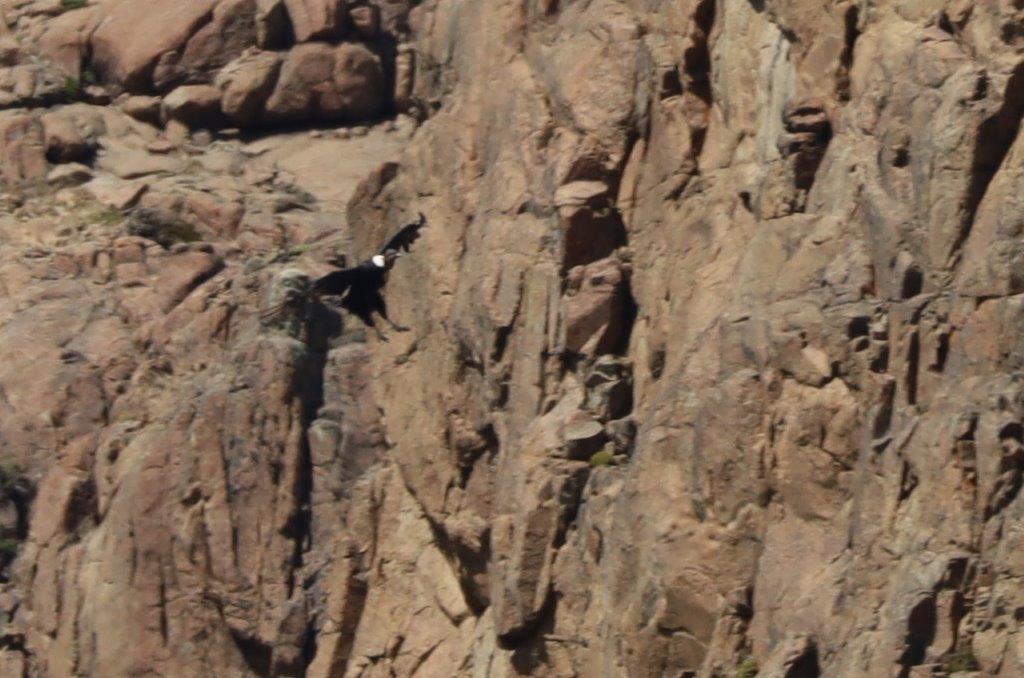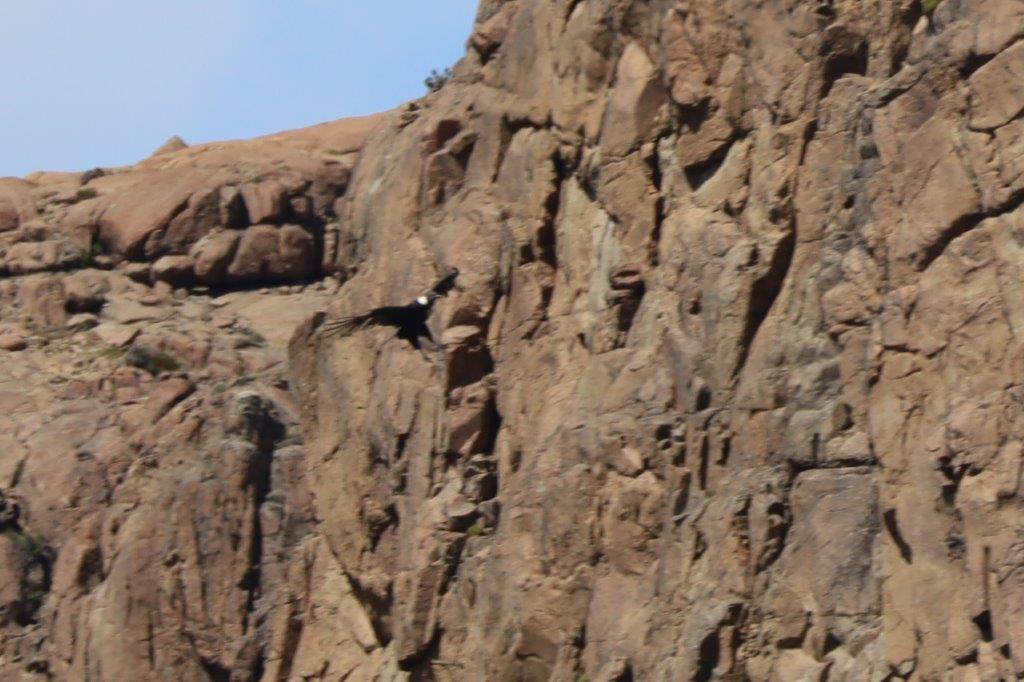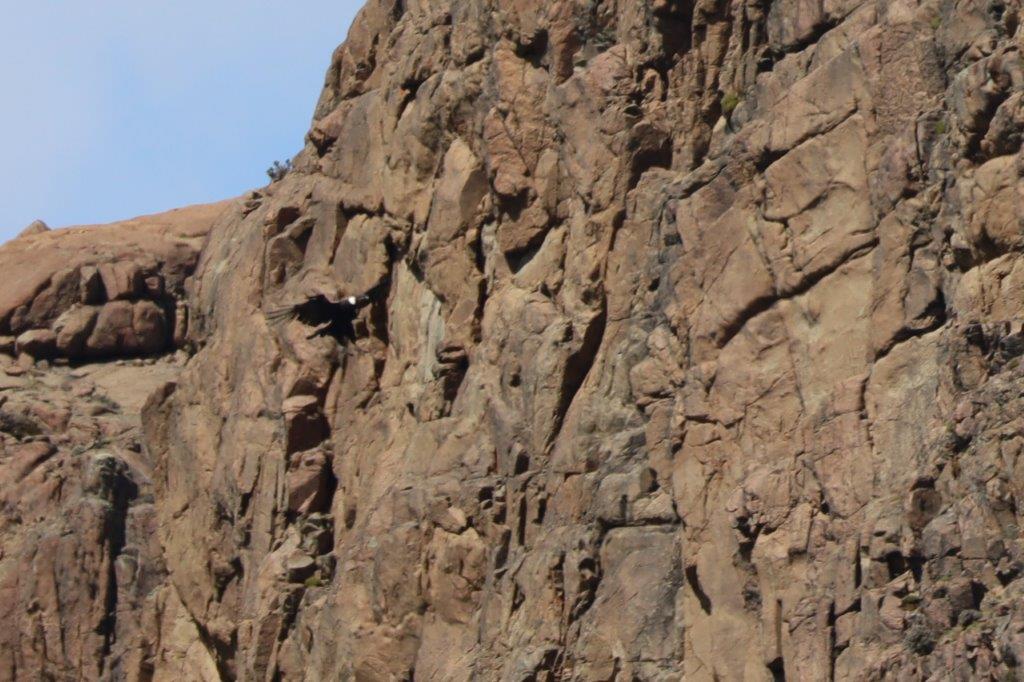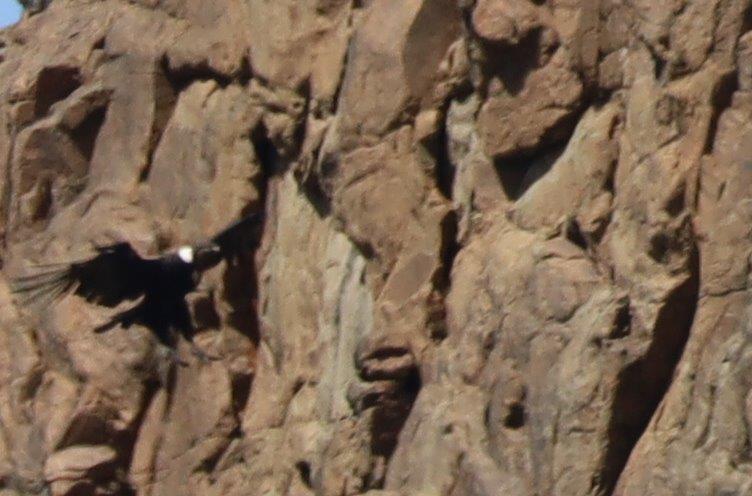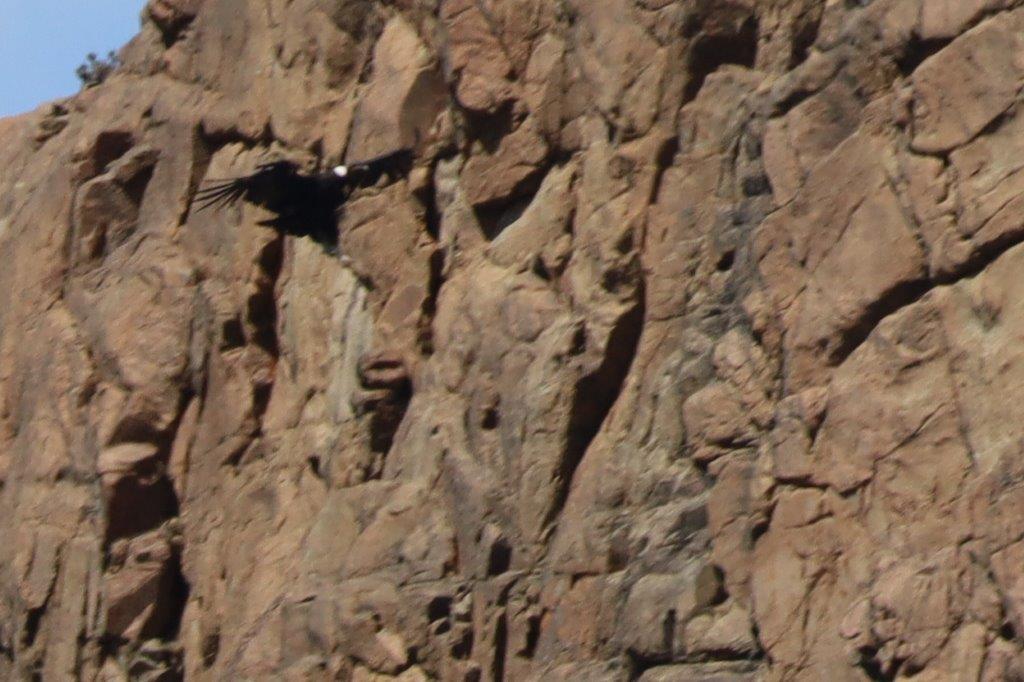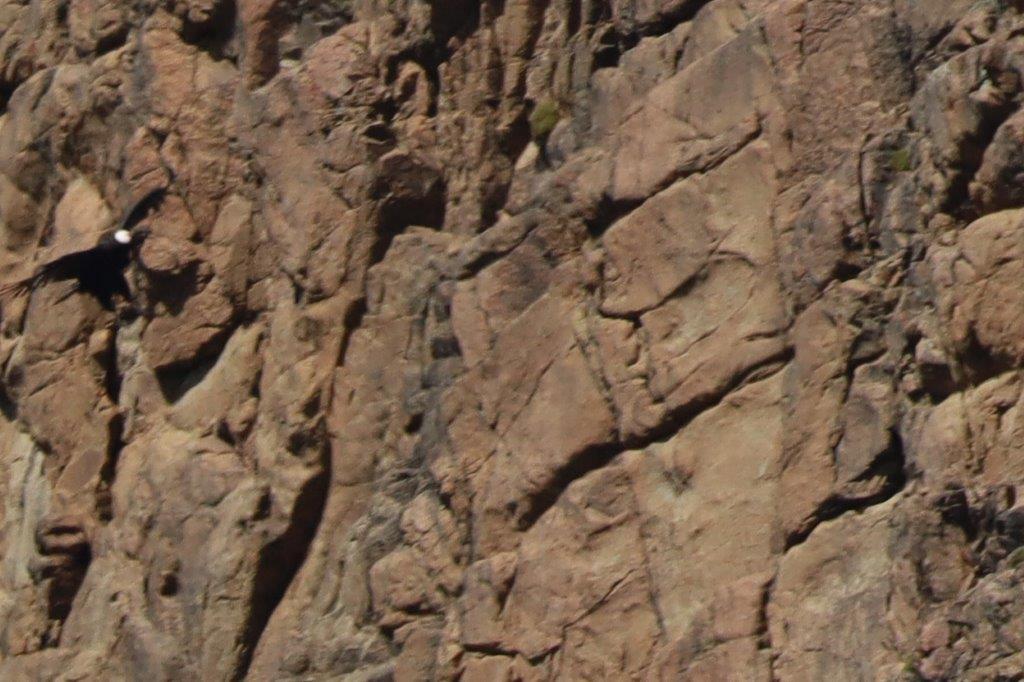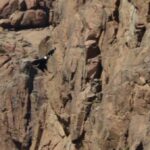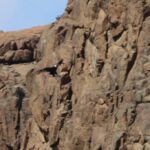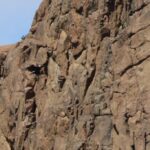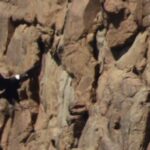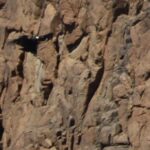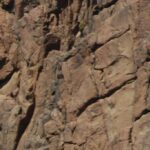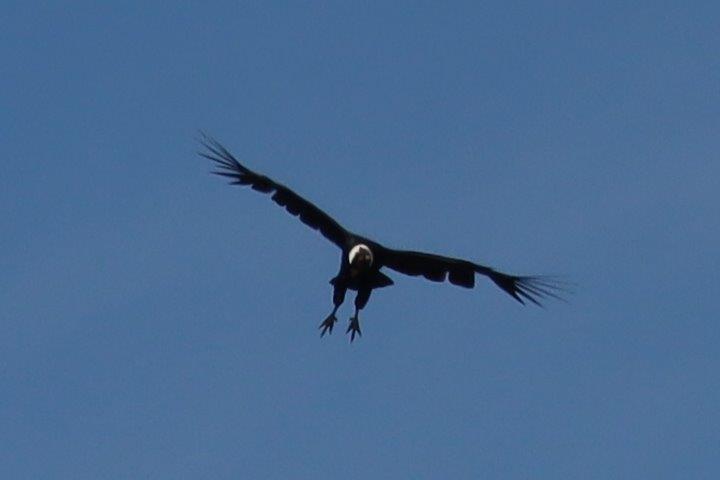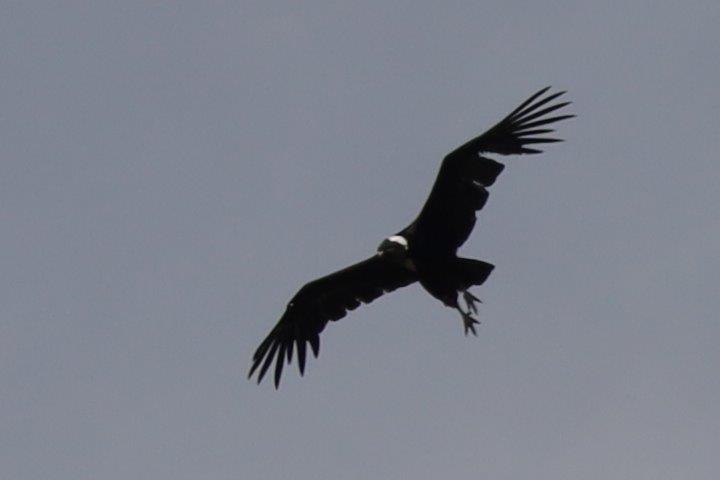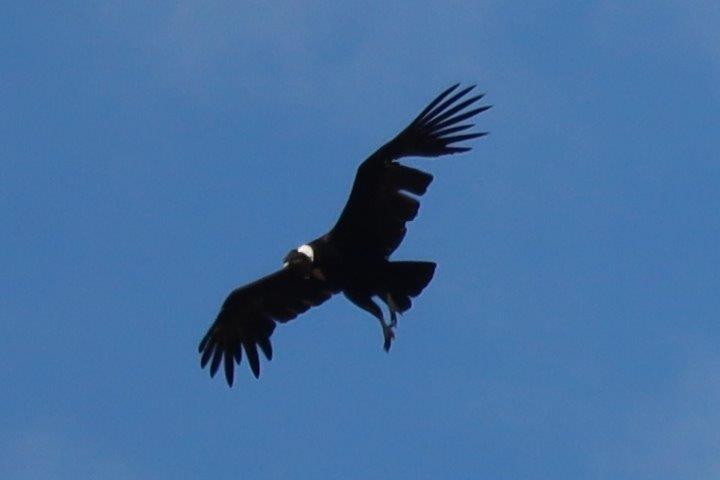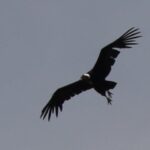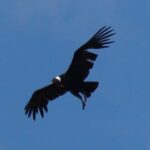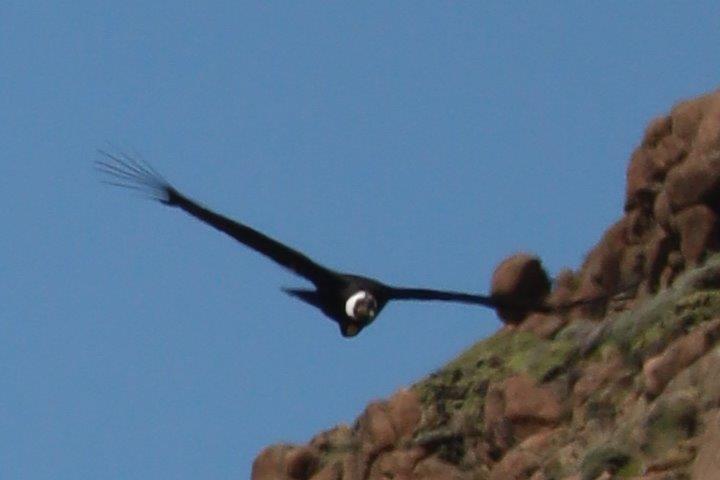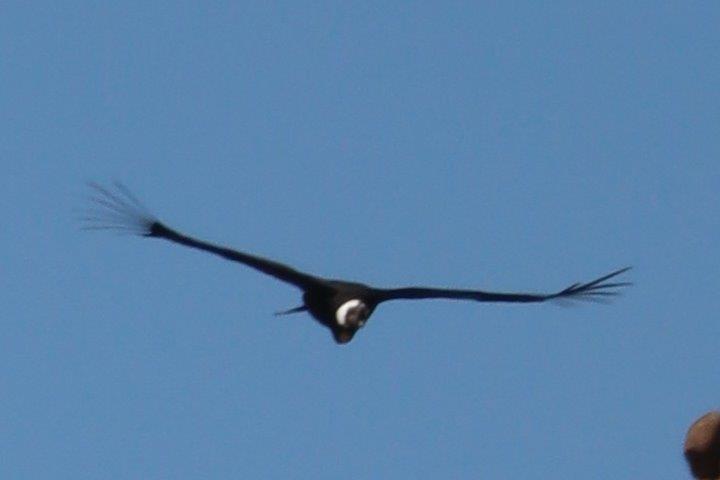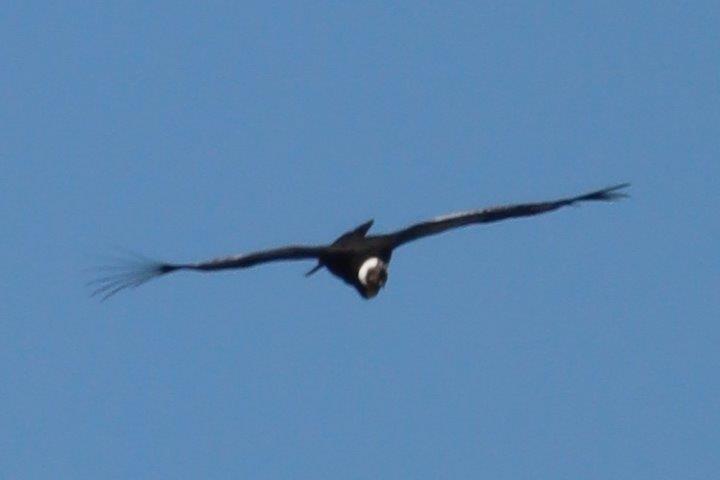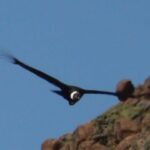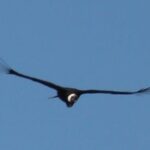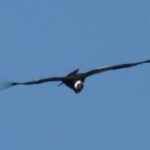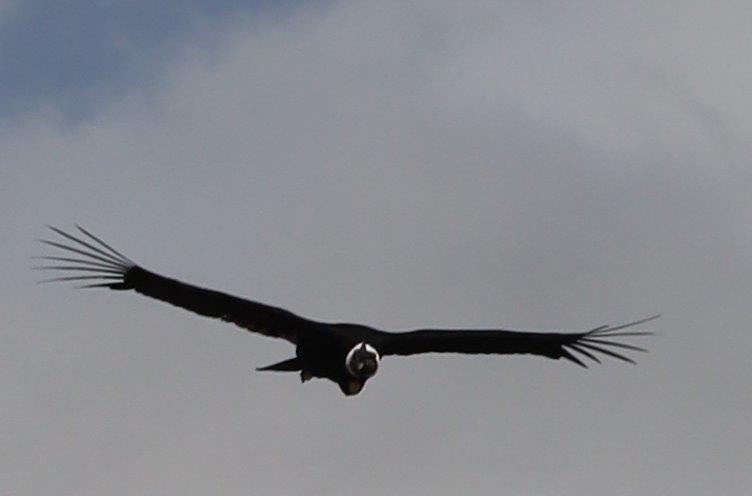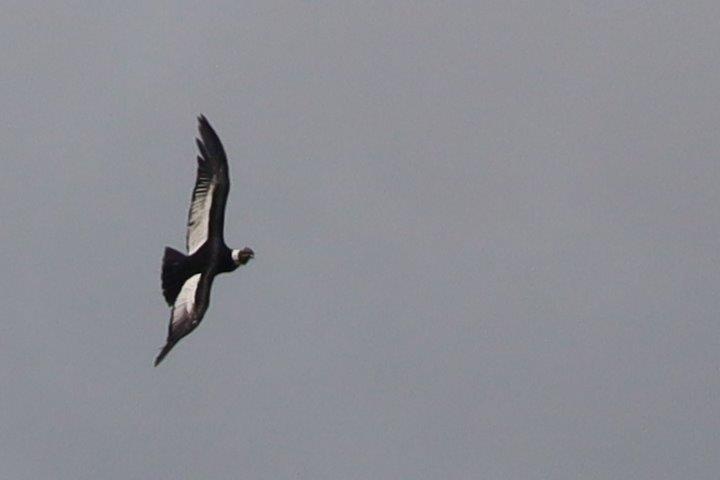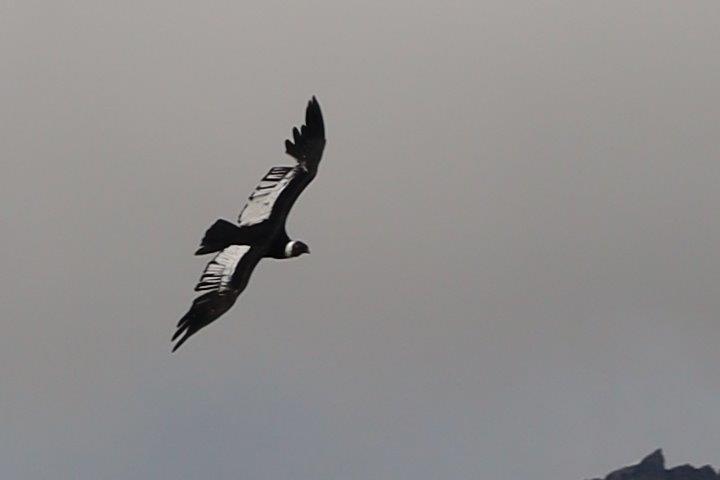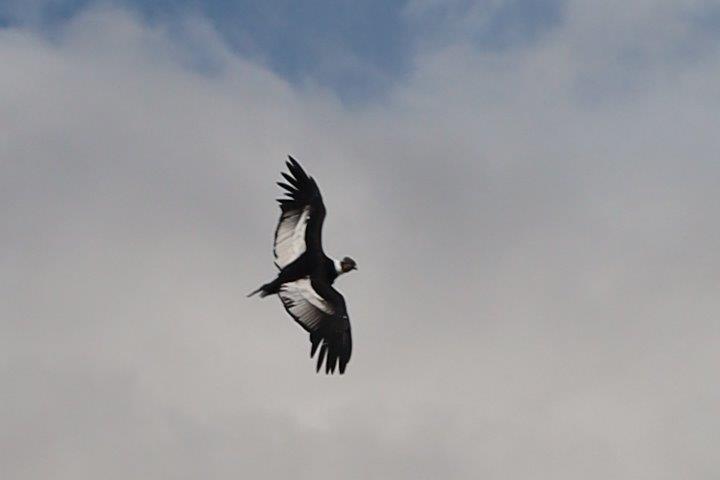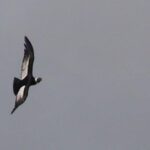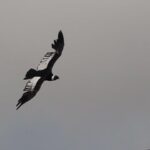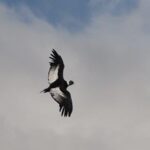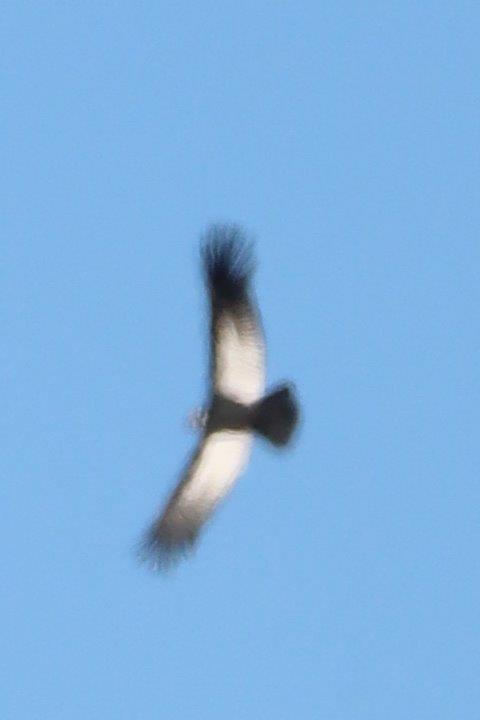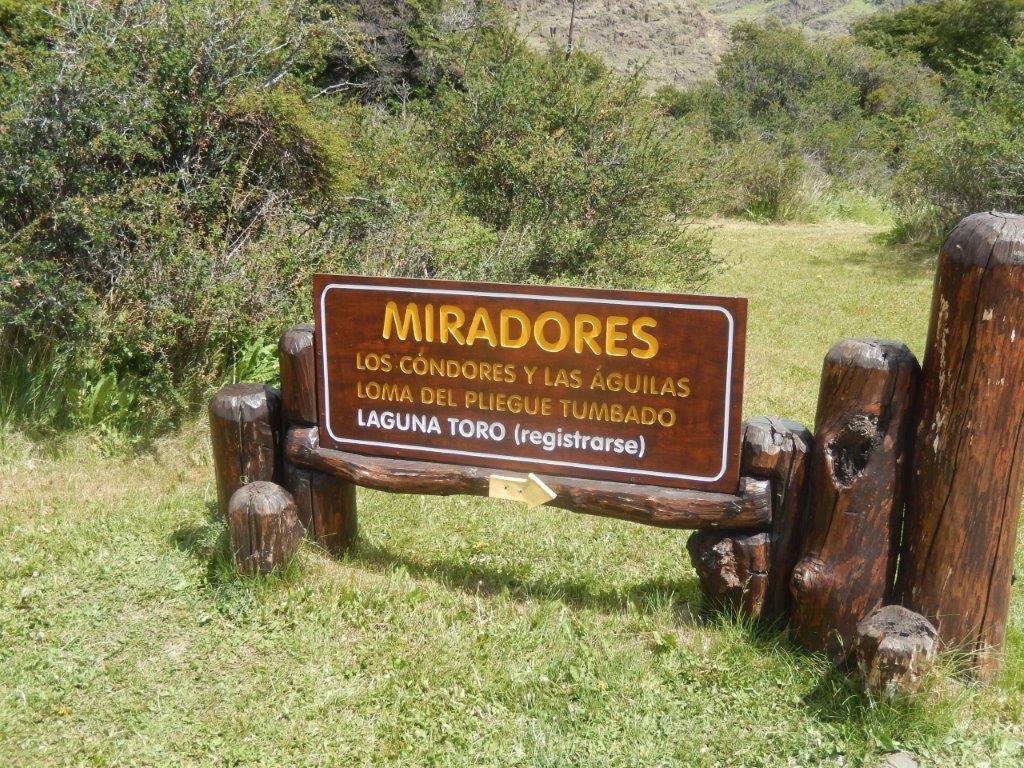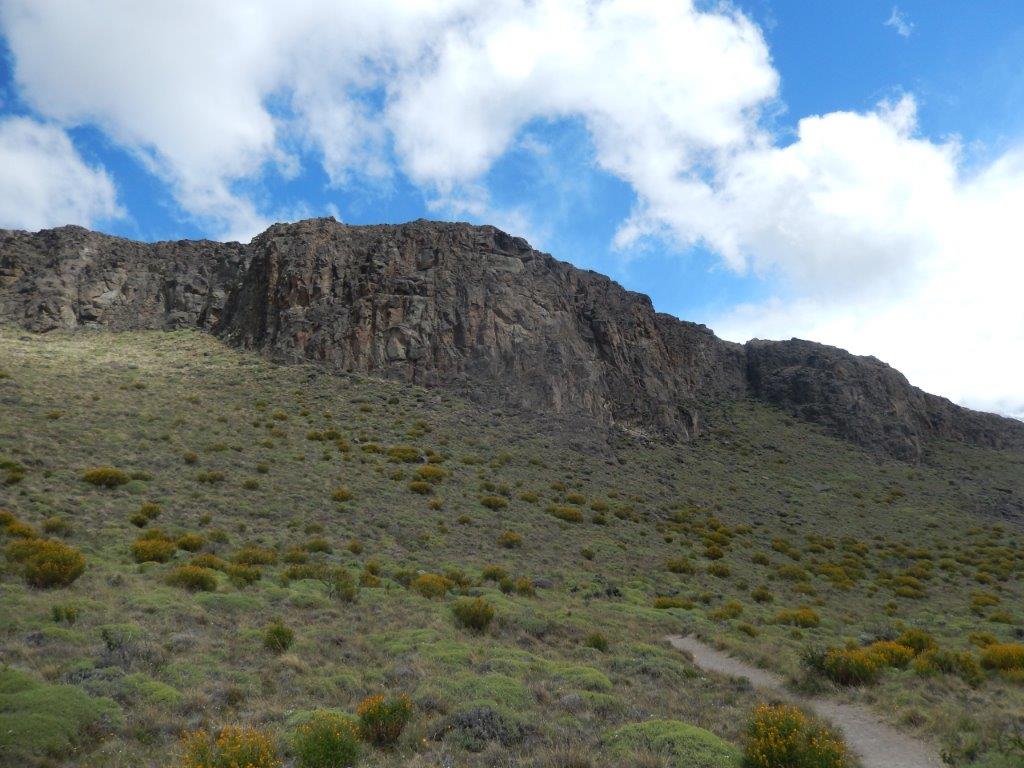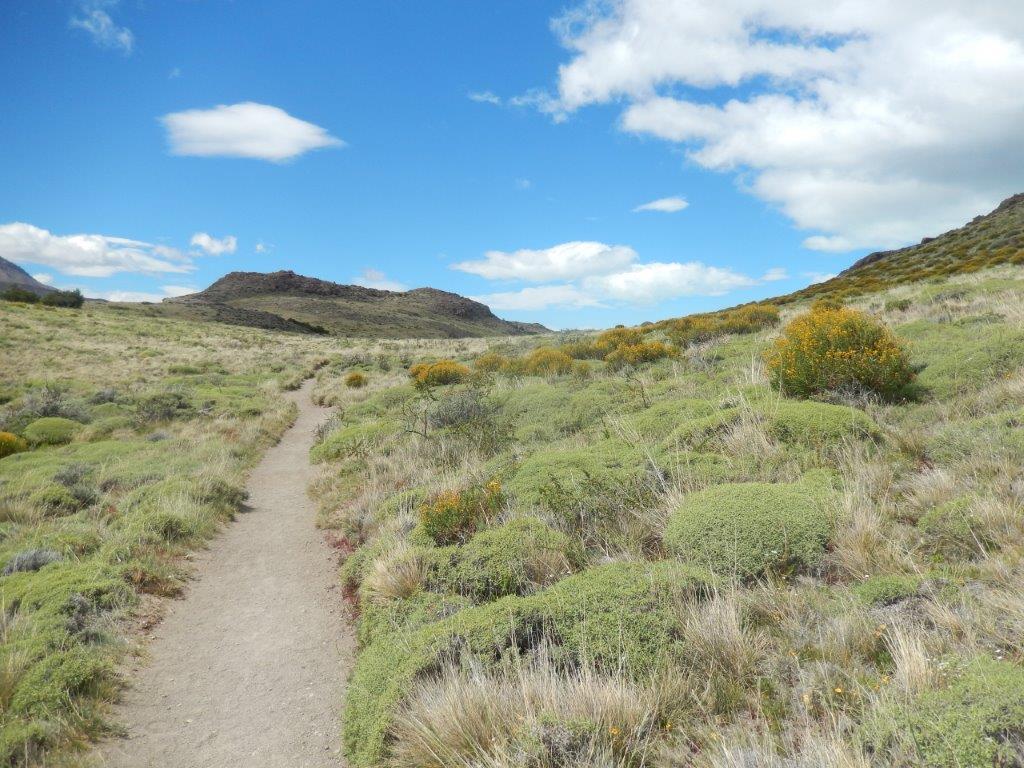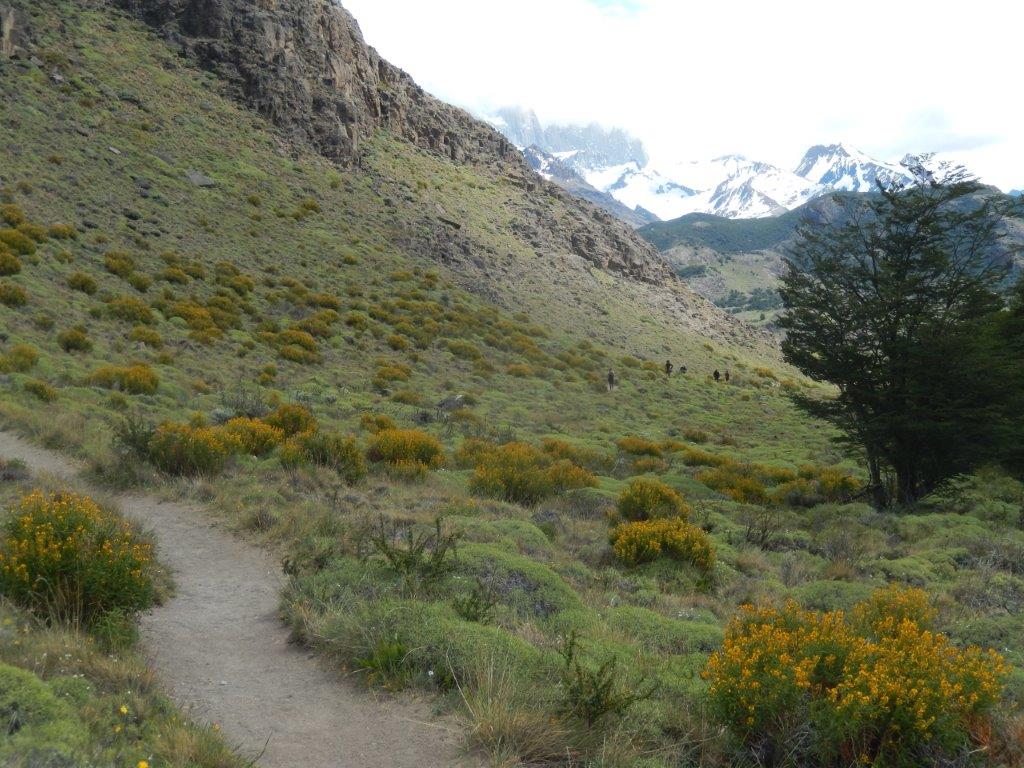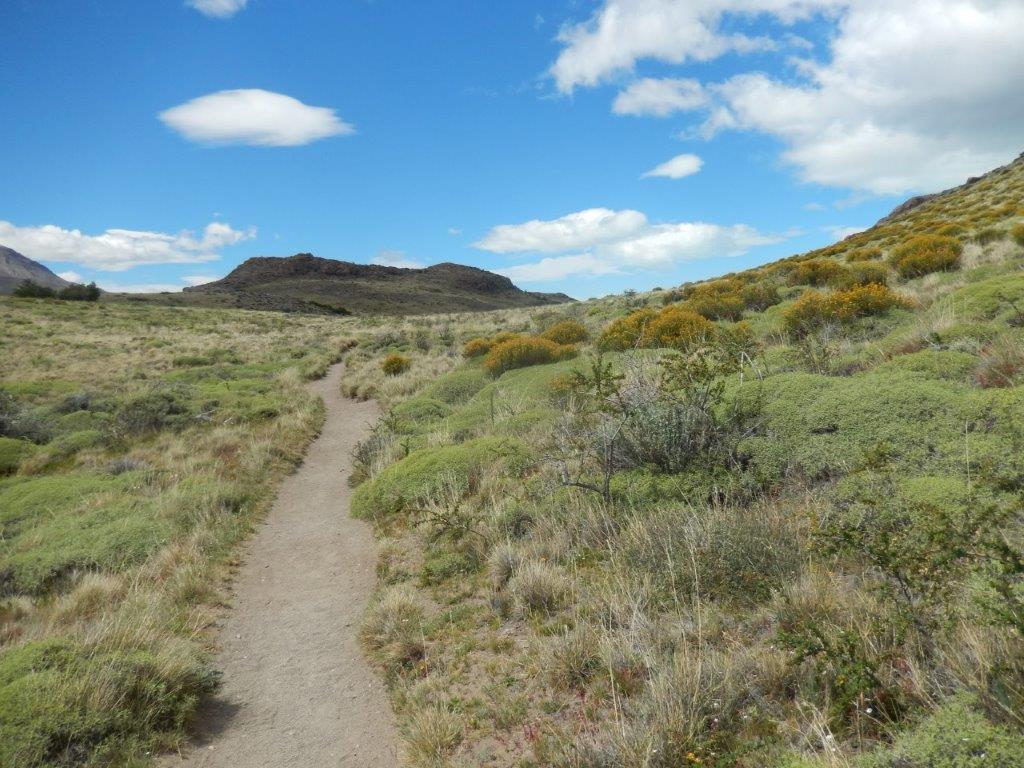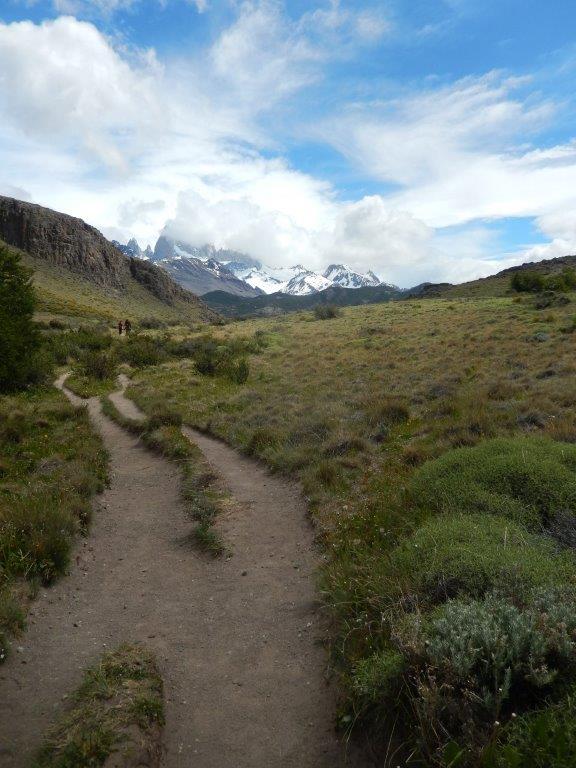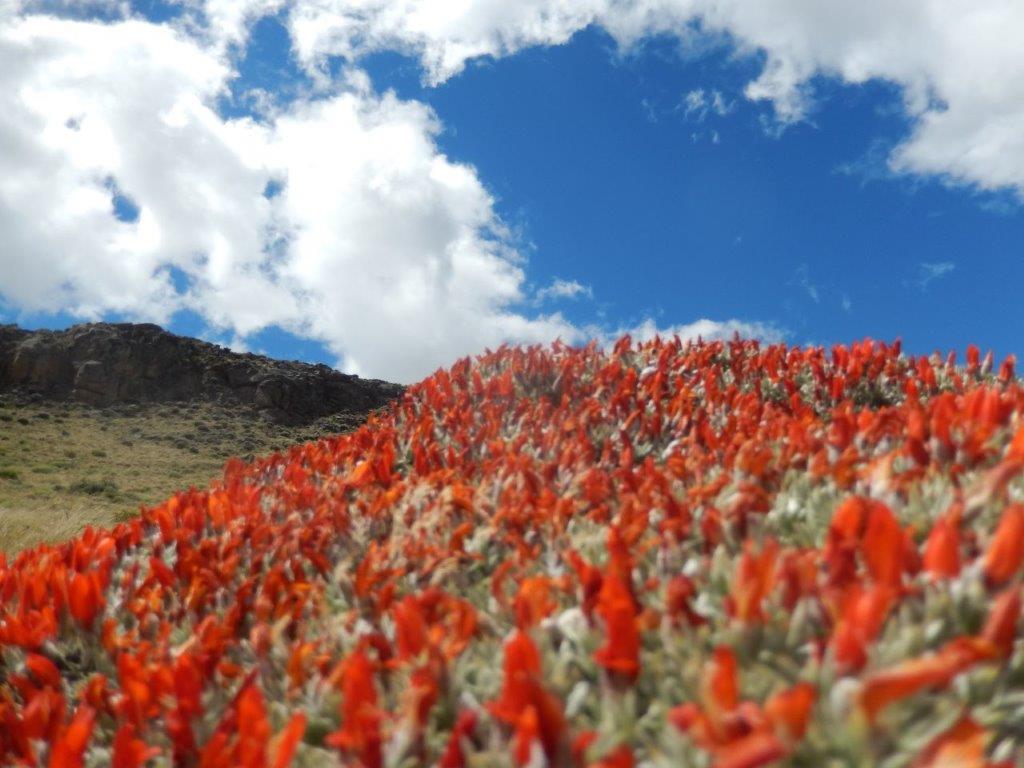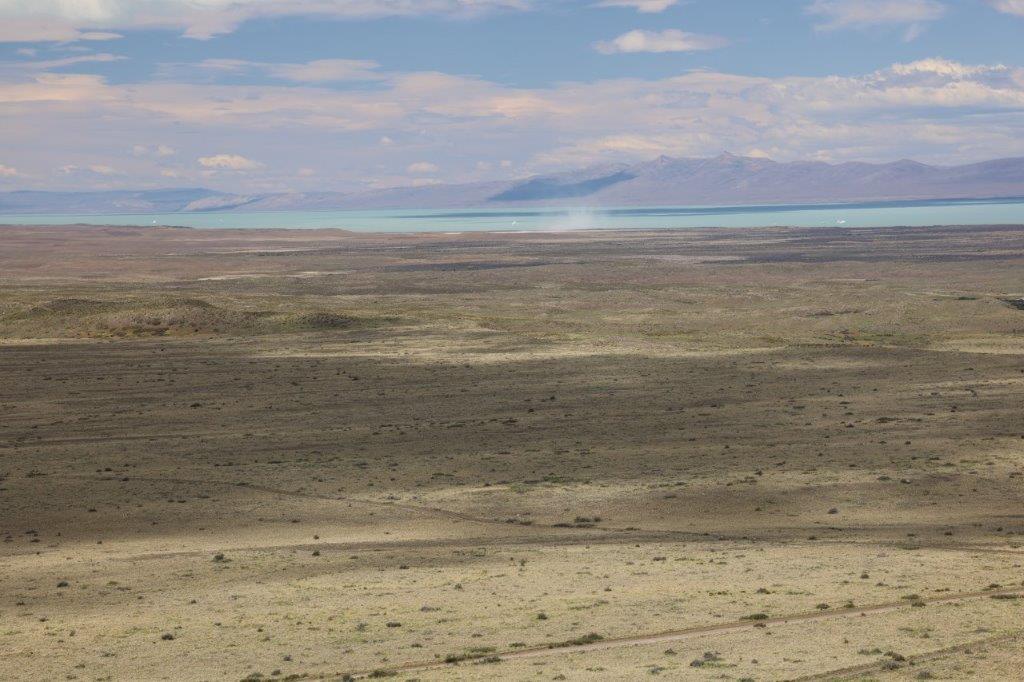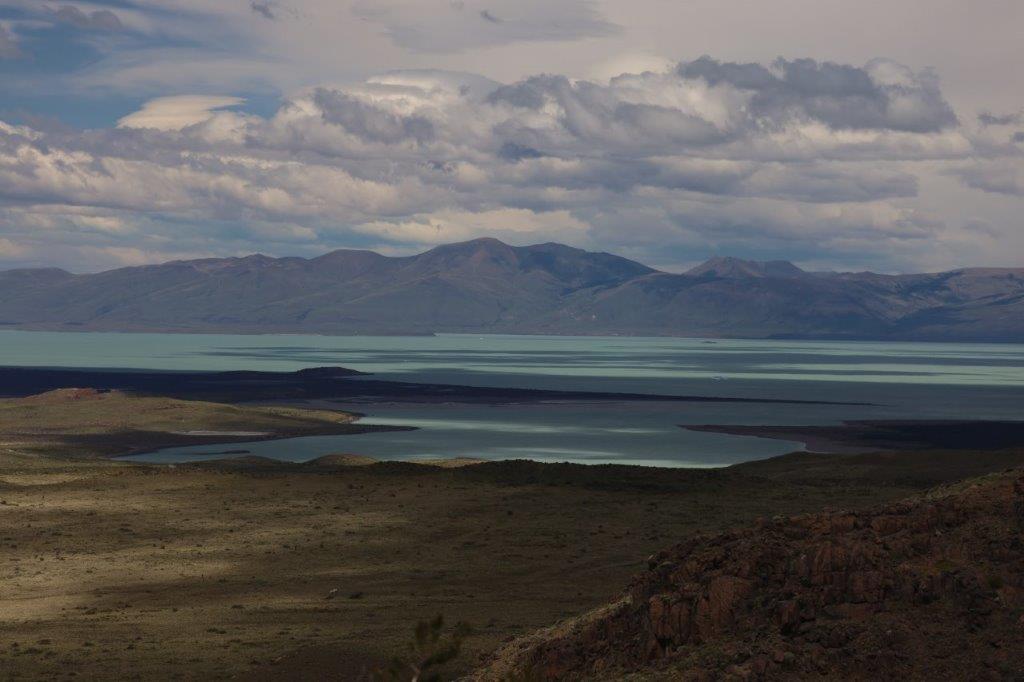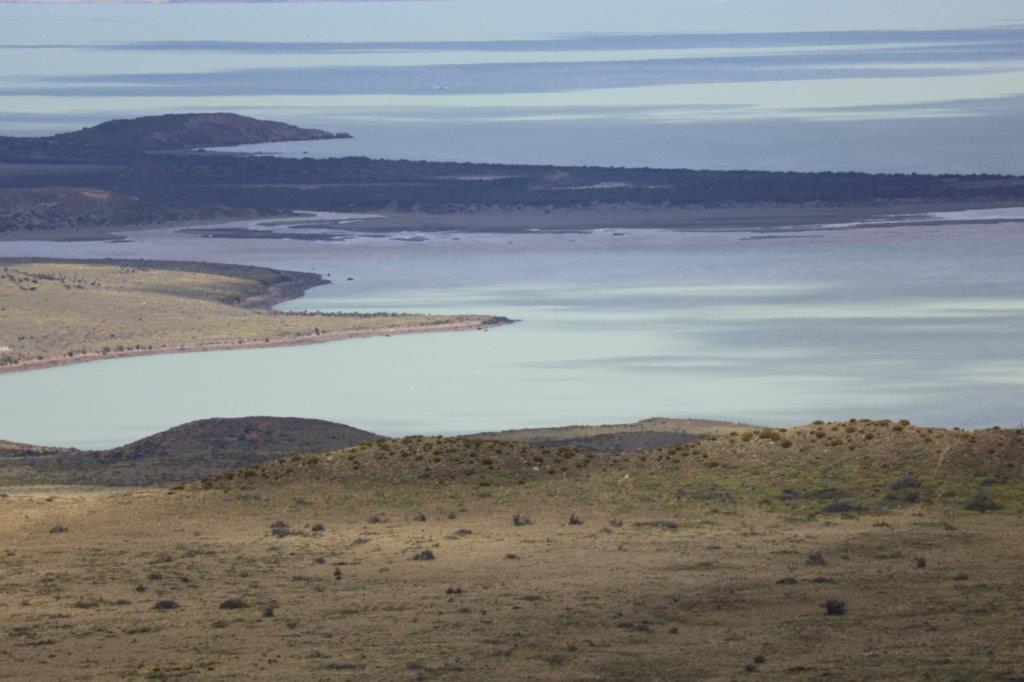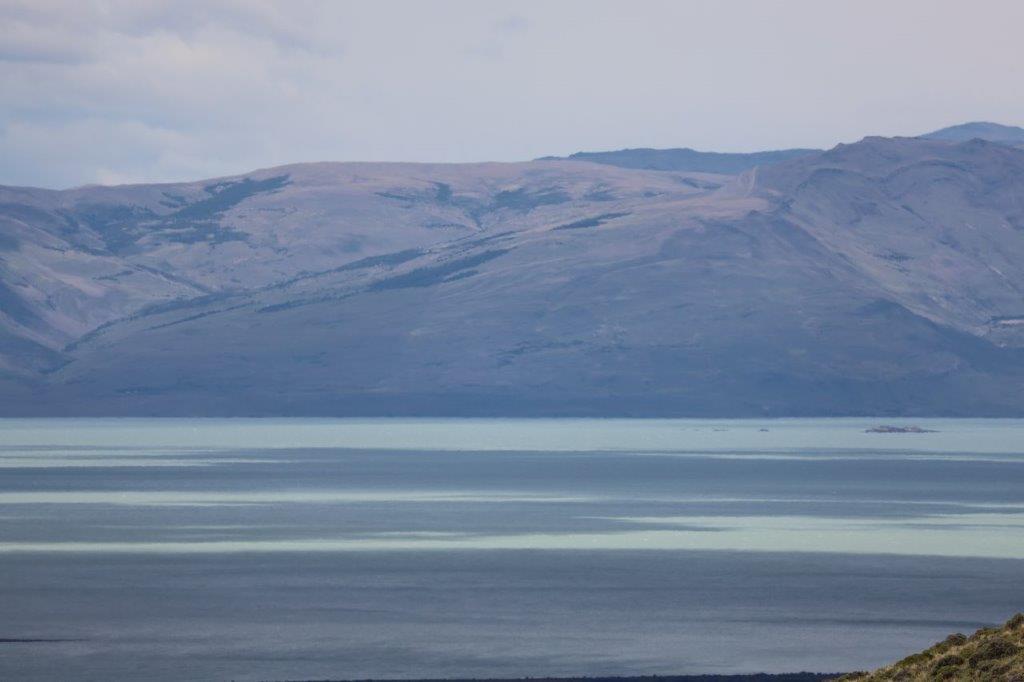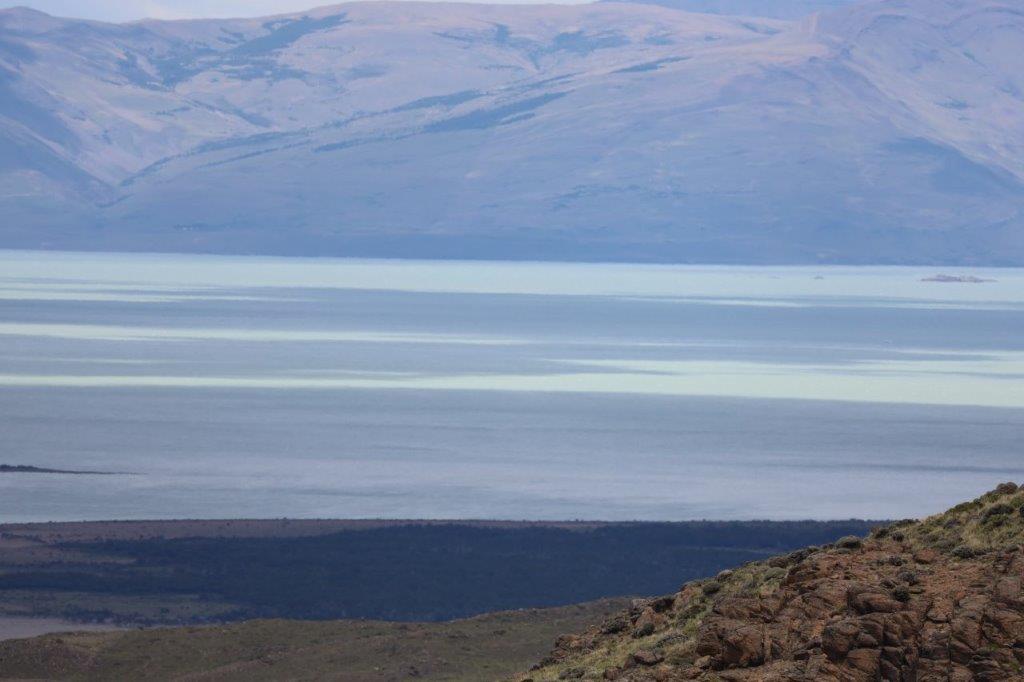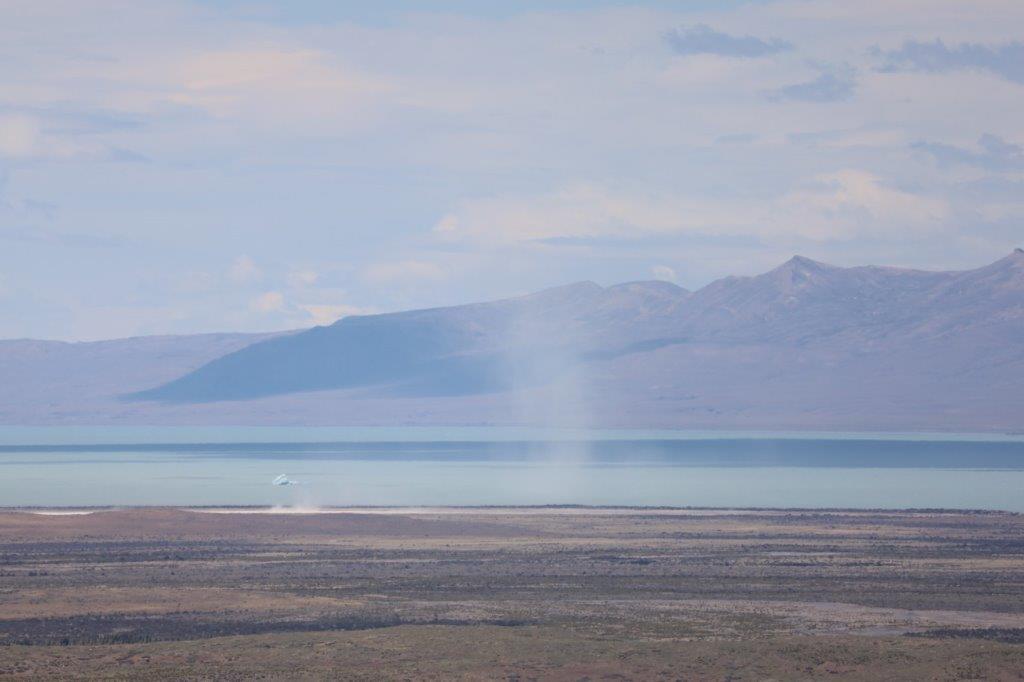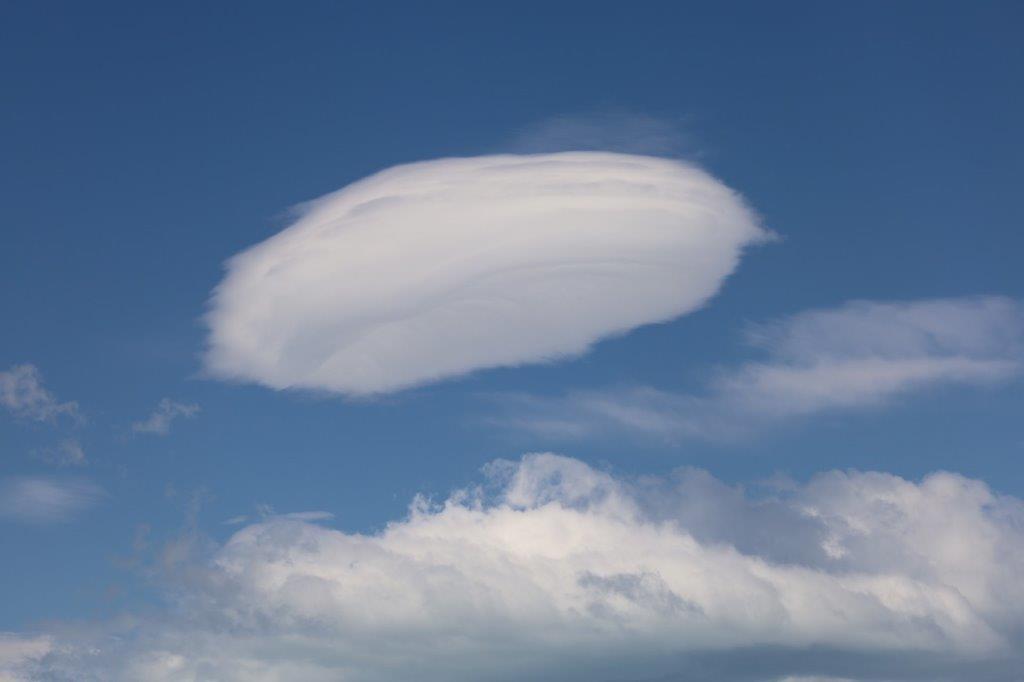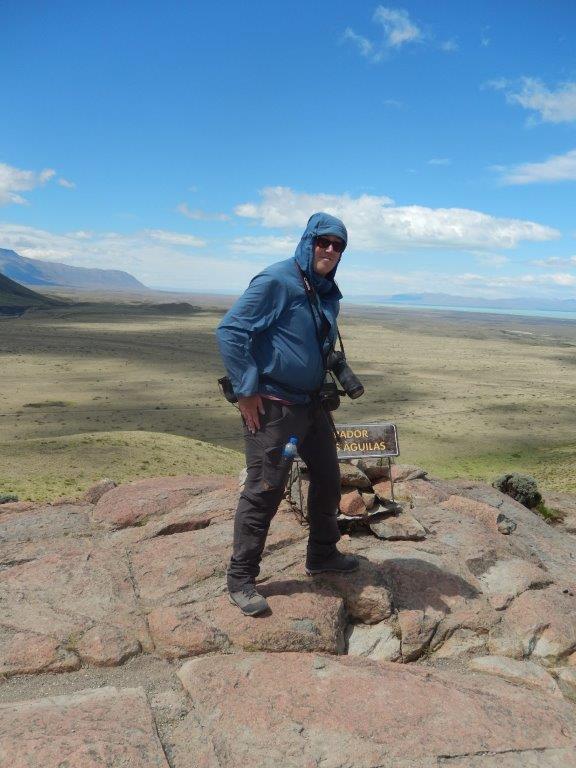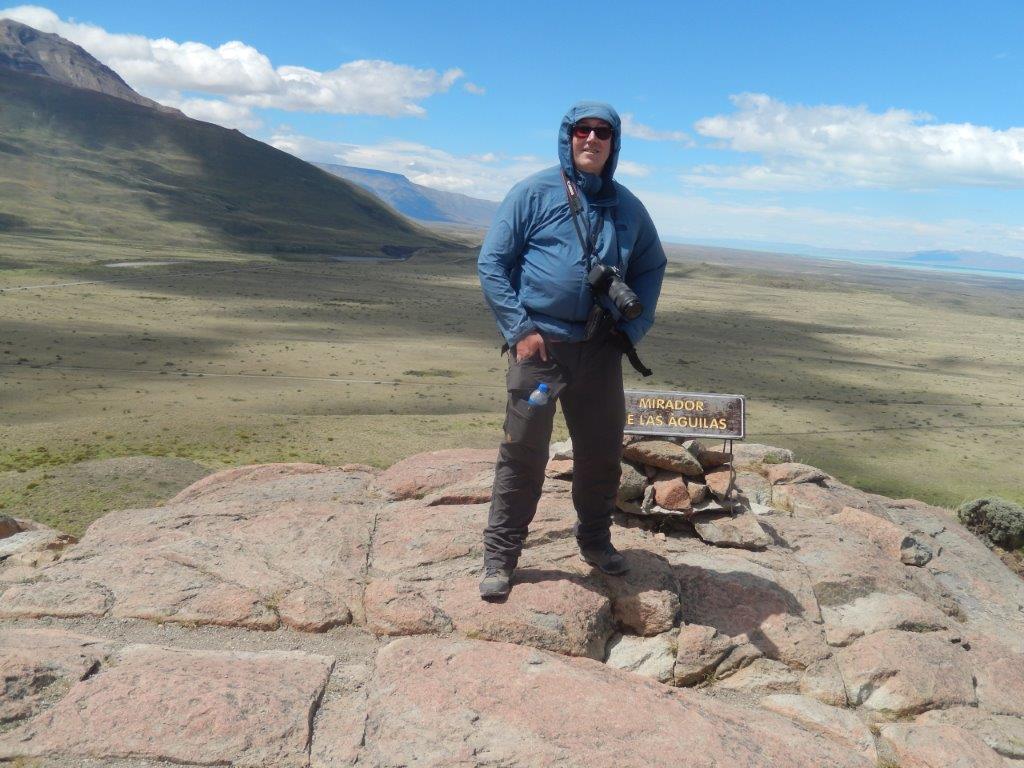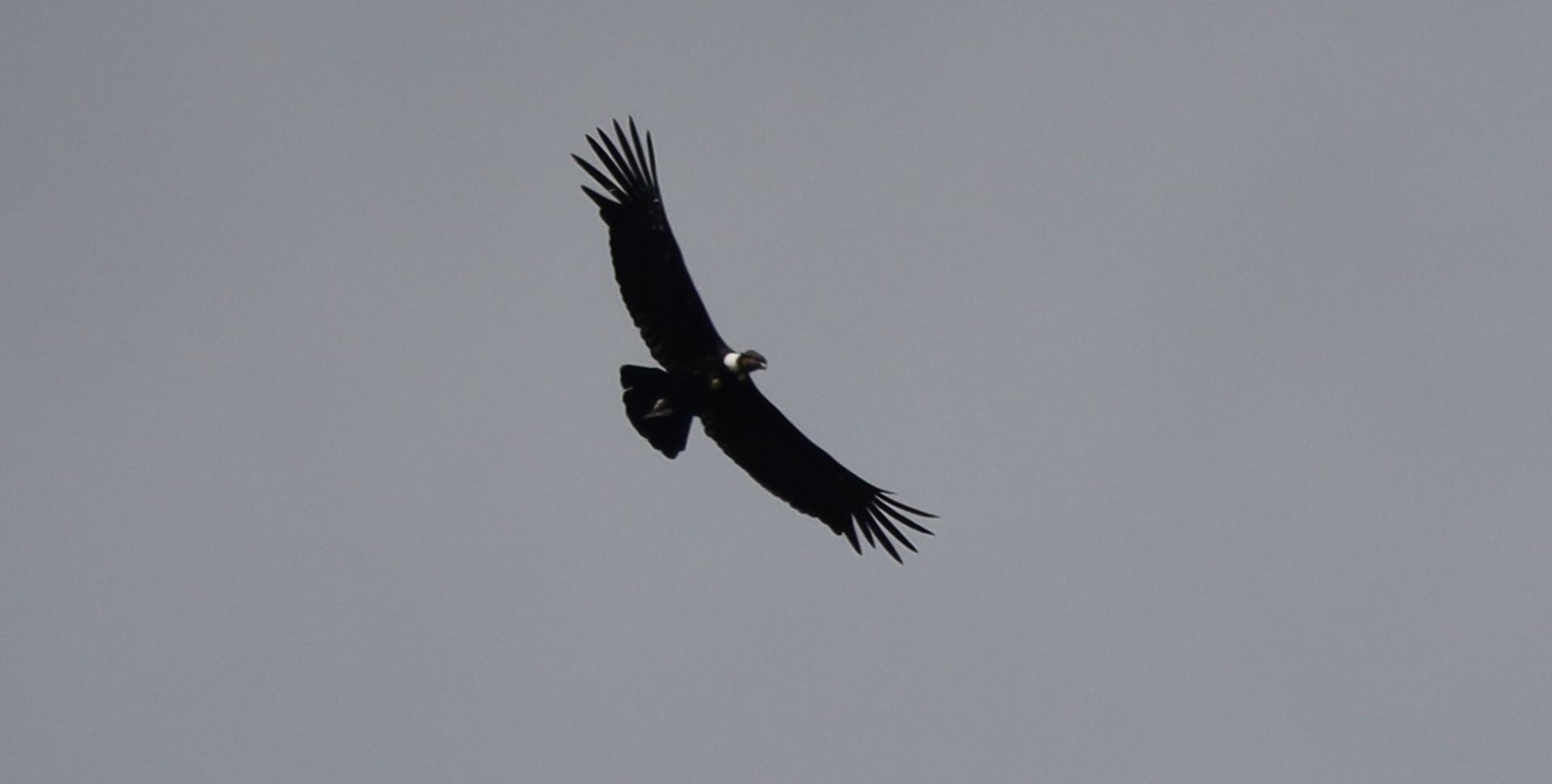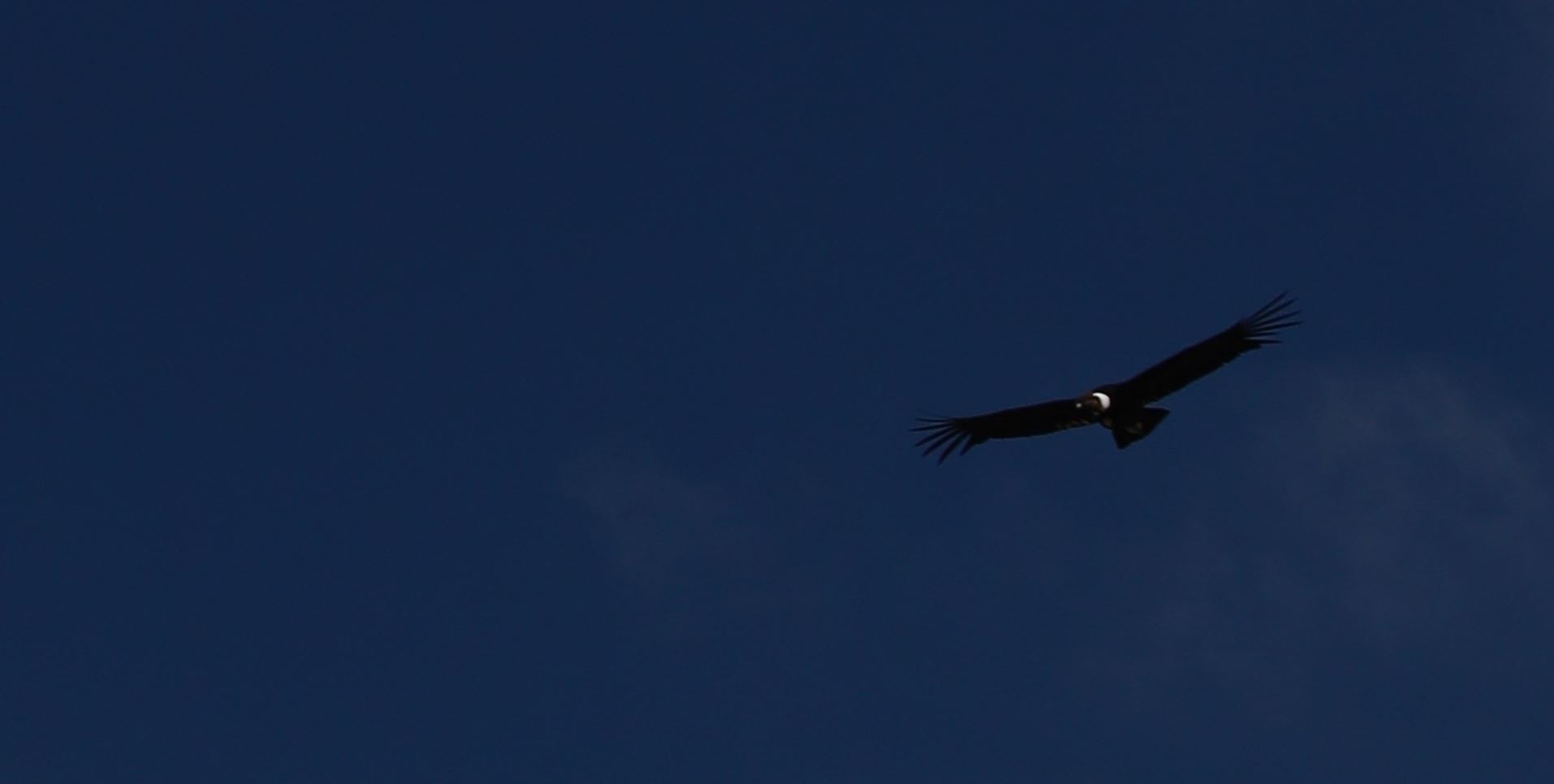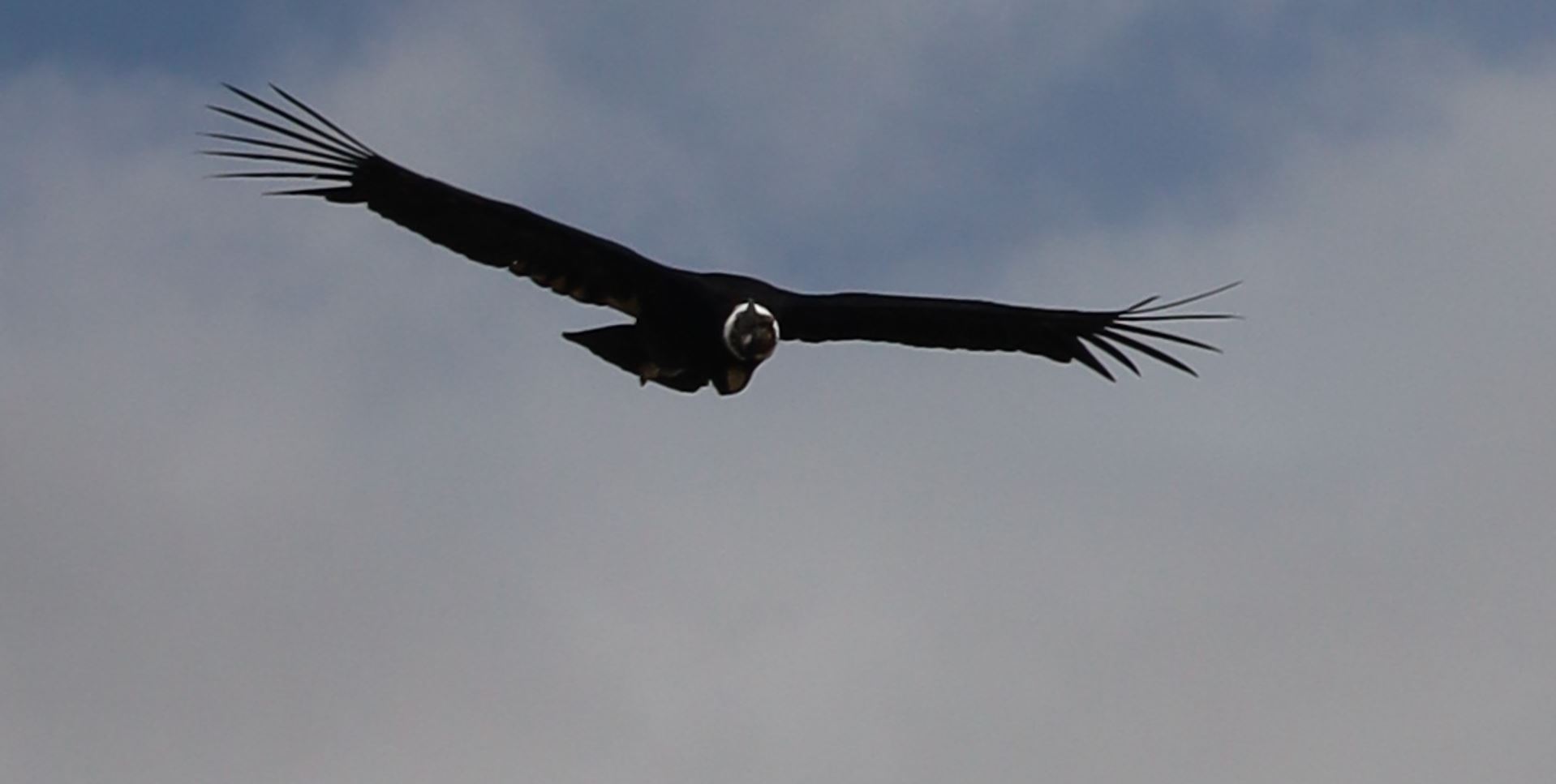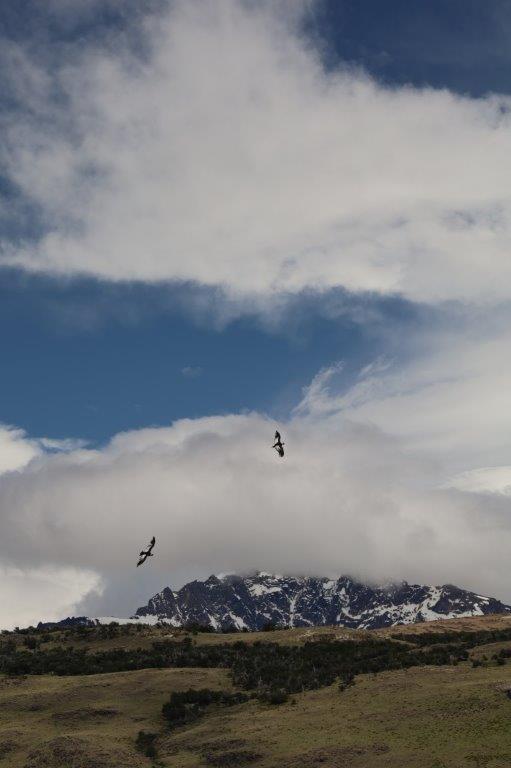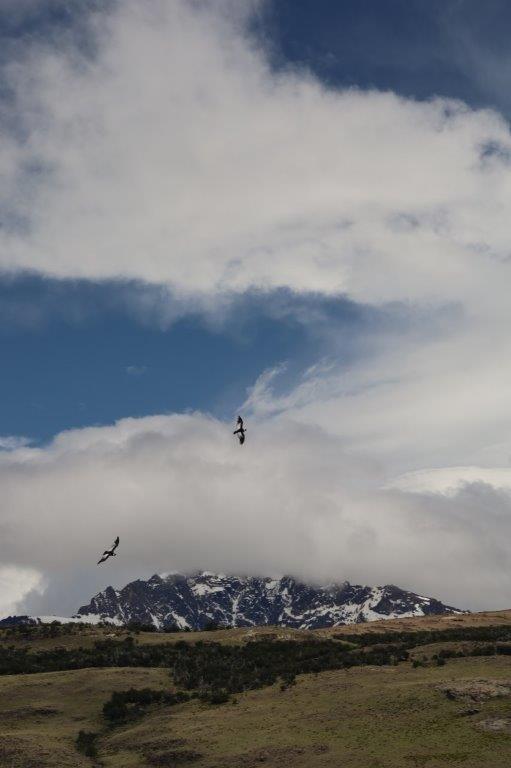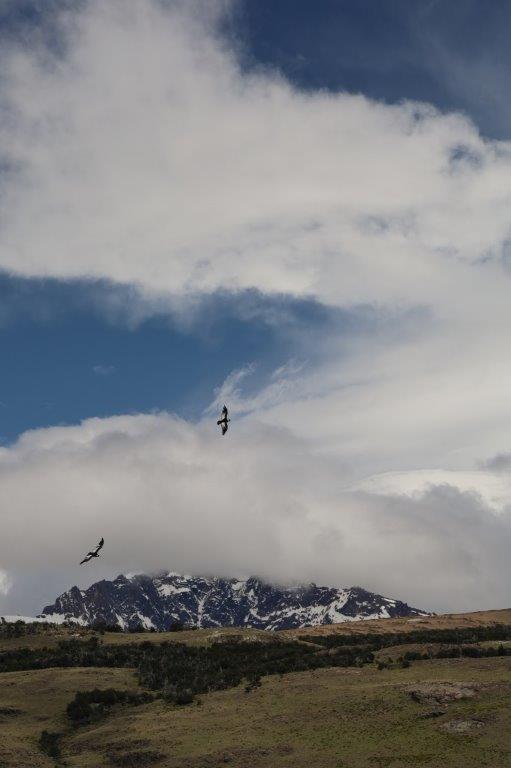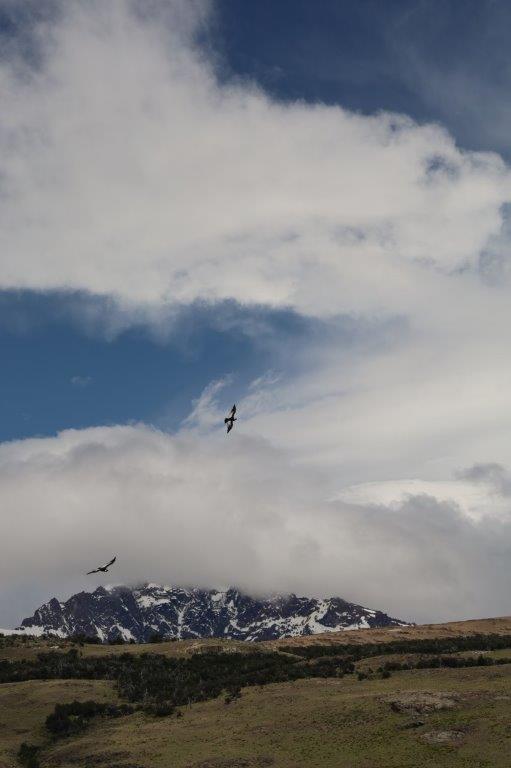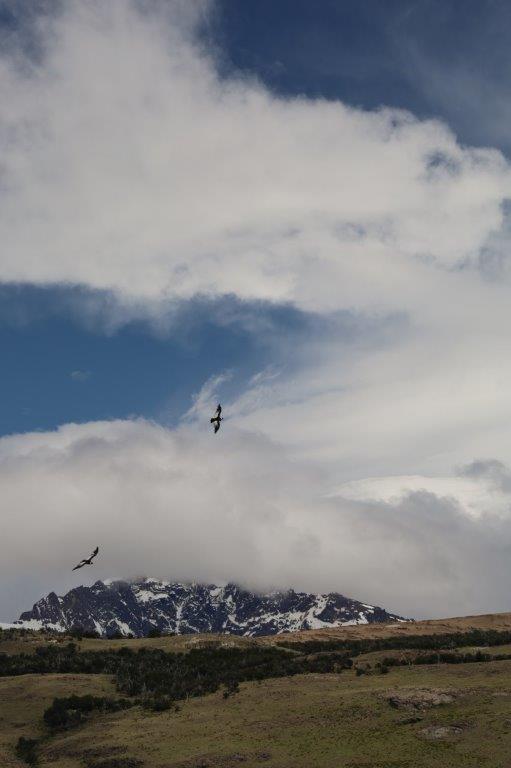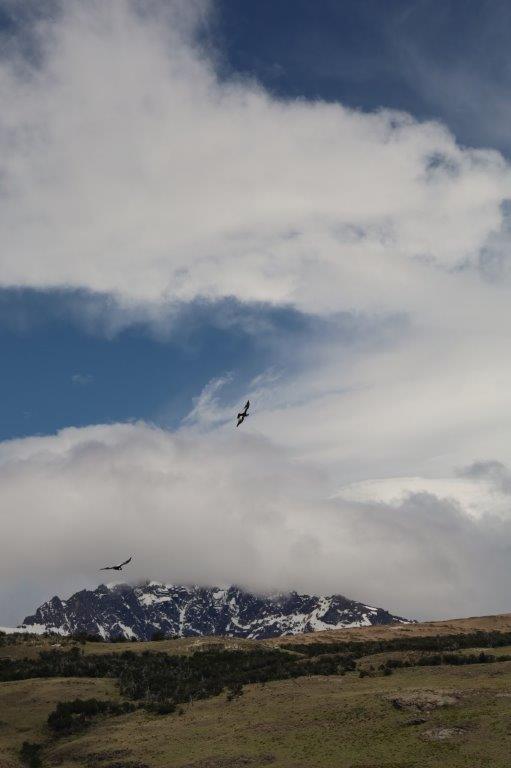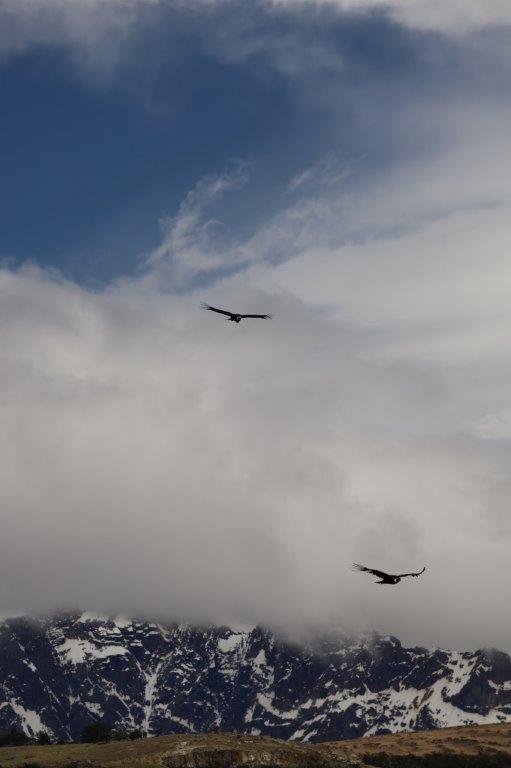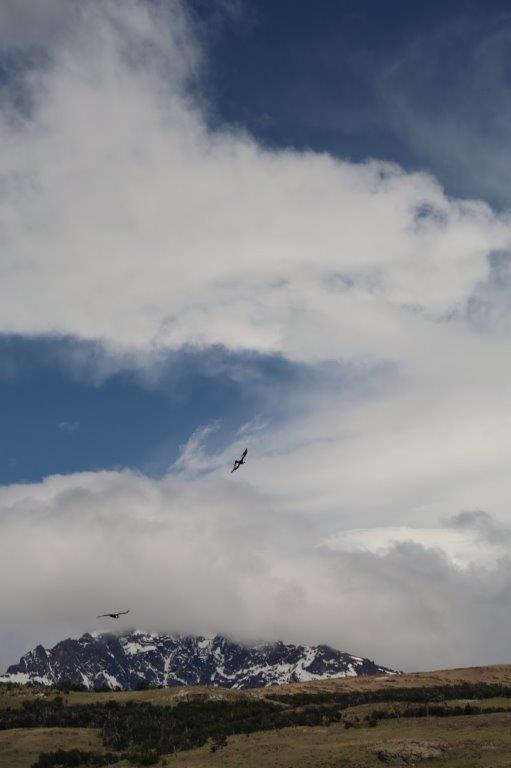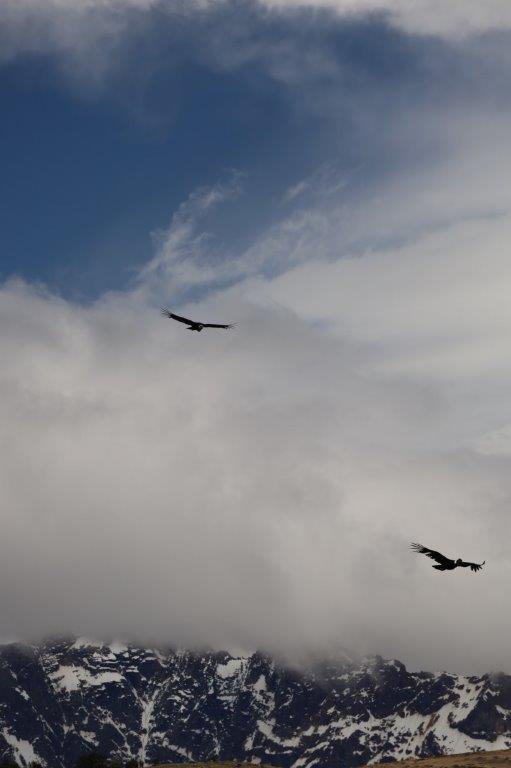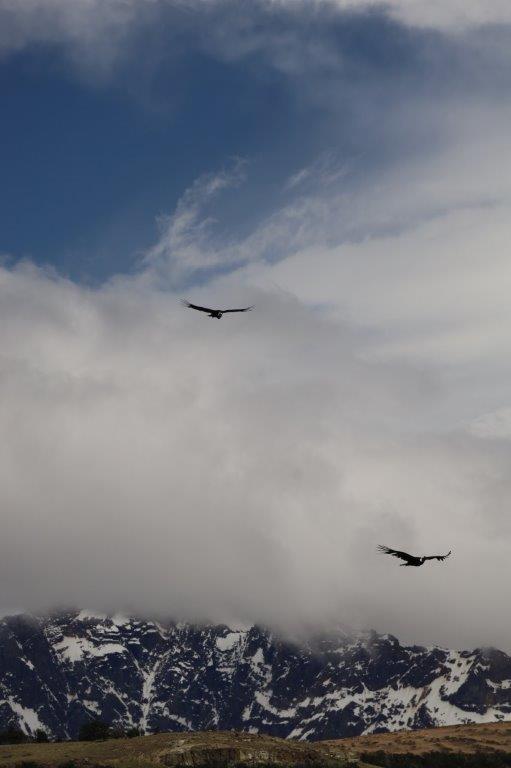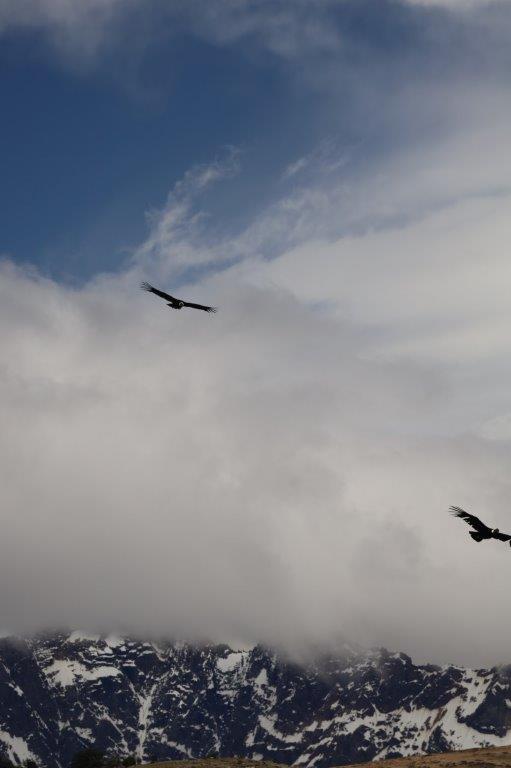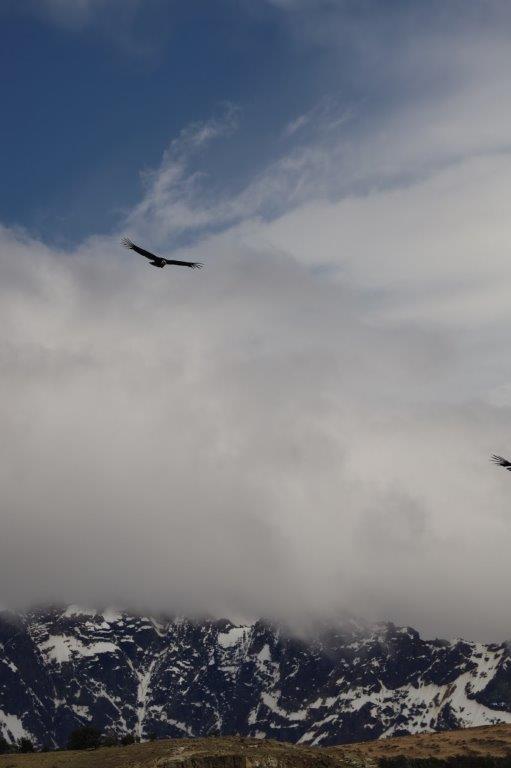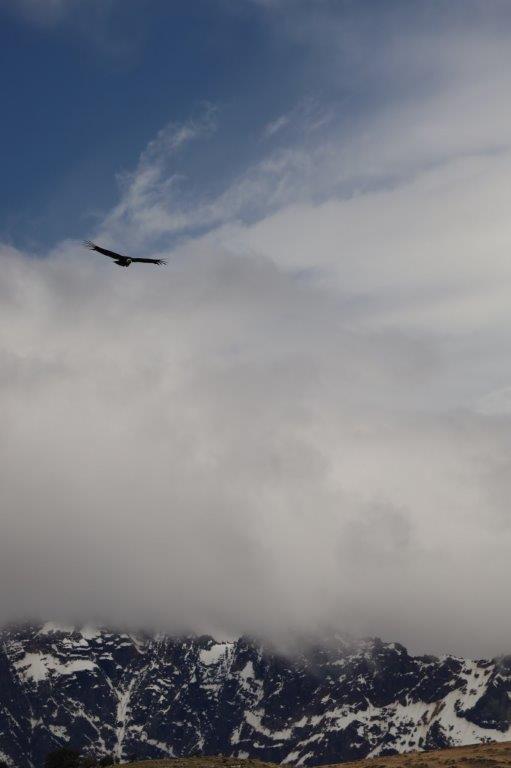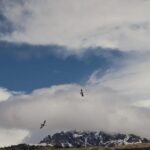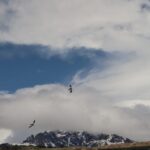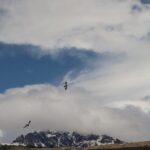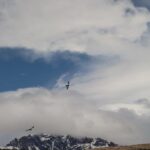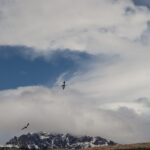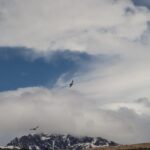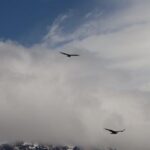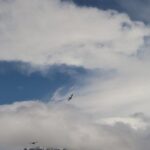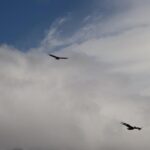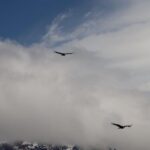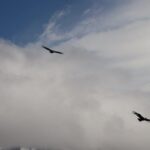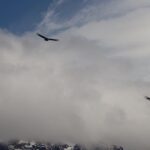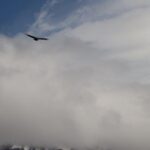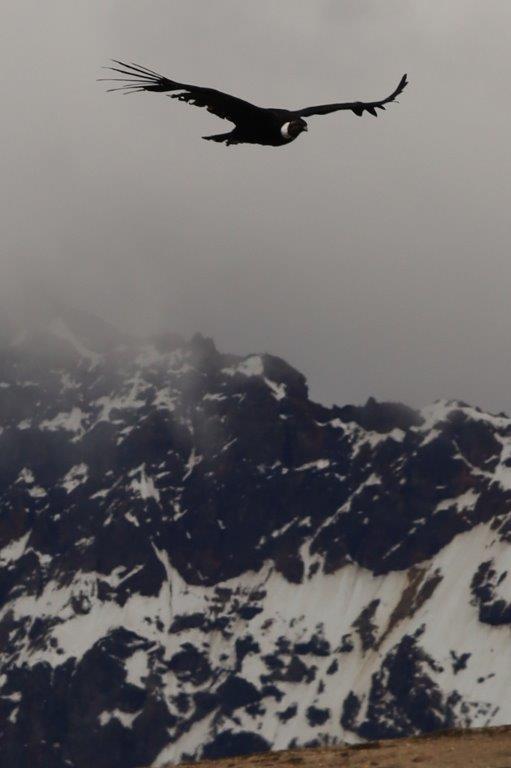26. Argentina: El Condor Pasa: Hiking to see the Condors passing by (Los Glaciares National Park/UNESCO World Heritage Site)
The Wandelgek so much anticipated on finally writing this blogpost and working with the beautiful photographic material he shot last winter.
The Wandelgek has been sooooooooo lucky regarding wildlife on camera on this journey. Southern right whales, Mother whale with 2 siblings, Southern seals, Elephant seals, Orcas, Magellanic Penguins, Guanacos, Flamengos, Grey foxes, Rhea and still more to come and today was going to be a phantastic day in that regard…
EL Condor pasa… The Condor passes by… The Paul Simon and Art Garfunkel song, written by Los Incas, speaks to us all as the ultimate song about freedom, about flying and about living life to the fullest instead of vegetating and letting life dictate what happens. It is the feeling of an urge, an itch perfectly put into words by Paul Simon.
“I’d rather be a sparrow than a snail”.
For The Wandelgek it is an urge to go out and see as much as possible of our world and experience it. Meeting loads of people on the road, but also all those rare moments of getting eye to eye with the most beautiful wildlife of our planet. The Wandelgek was priviliged to see whales and orcas on this journey through patagonia, but high on his wishlist was meeting the Condors and see them pass by ….
Paul Simon wrote the text to this beautiful Los Incas song and together with Art Garfunkel and Los Incas, created a world wide hit on the famous Bridge over troubled Water vinyl album.
The Wandelgek rose early from his bed and started packing for his day walks. He had several options for that of which one was a long walk towards the Laguna de los Tres, but he chose to connect 2 shorter walks, because he had heard from fellow travellers that these were the best walks to spot… Condors.
Condor is the common name for two species of New World vultures, each in a monotypic genus. The name derives from the Quechua kuntur. They are the largest flying land birds in the Western Hemisphere.
They are:
- The Andean condor (Vultur gryphus), which inhabits the Andean mountains.
- The California condor (Gymnogyps californianus), currently restricted to the western coastal mountains of the United States and Mexico and the northern desert mountains of Arizona in the United States.
The Wandelgek took all of his camera gear, including his tripod which he would try to use one last time and which would fail him again…
The walks both started at the visitor center which is just outside of El Chalten at the other side of the Rio Fitz Roy, which can be crossed via this small bridge…
Next he started with the shorter of the 2 walks which was accordingly named the trekking of Mirador de las Condores.
The first part of the trail, which was rather short was still flat level and gave a nice view over Mount Fitz Roy which began to hide itself in clouds, …
….but quickly the trail became quite steep, steeper than the Cerro Torre Trail. Still not a Difficult graded trail though but a Medium graded trail. The Vespignani Glacier Trail was even steeper though.
From these heights El Chalten could be overseen…
There were some information signs beside the trail about the wildlife and the geography.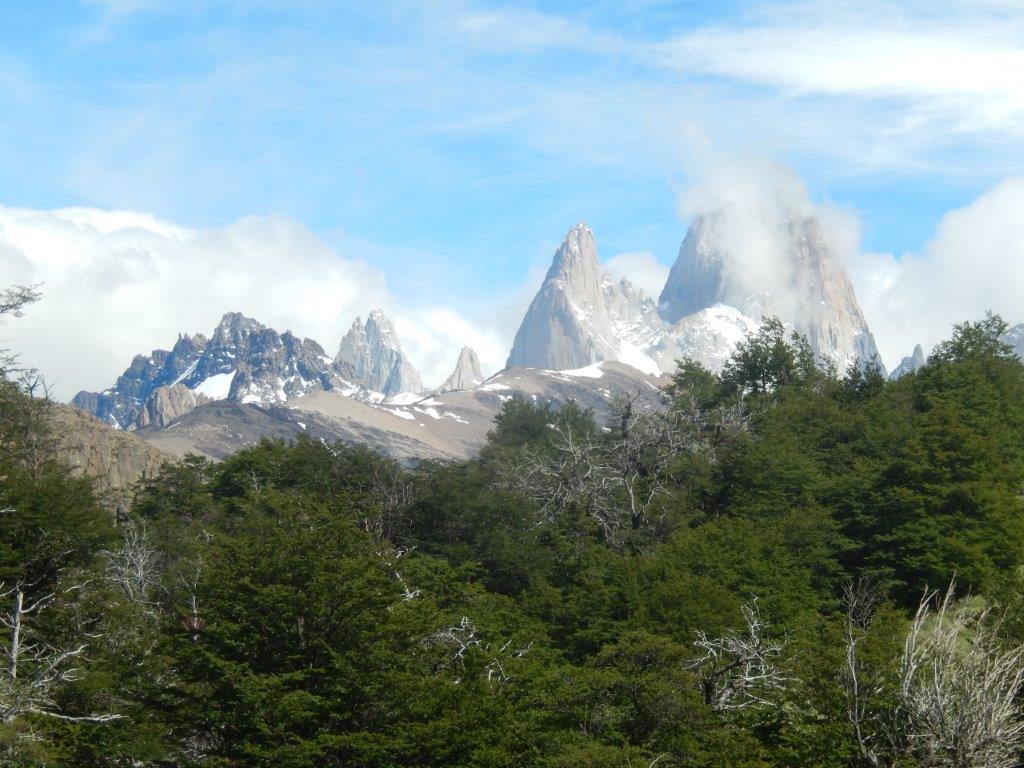
The Wandelgek was already looking for condors in tge sky, but saw none…
At a fork in the trail he turned left towards the Mirador de Condores and reached that soon after. It was a high place near some really steep almost vertical cliffs and The Wandelgek could see why he might expect to see condors here. They love nesting on cliffs like that. It was also very windy and after some tripod test runs he decided to not use that because it would be blown over, toppling down if he did.
Then The Wandelgek spotted his first condor flying low over the scrub land…
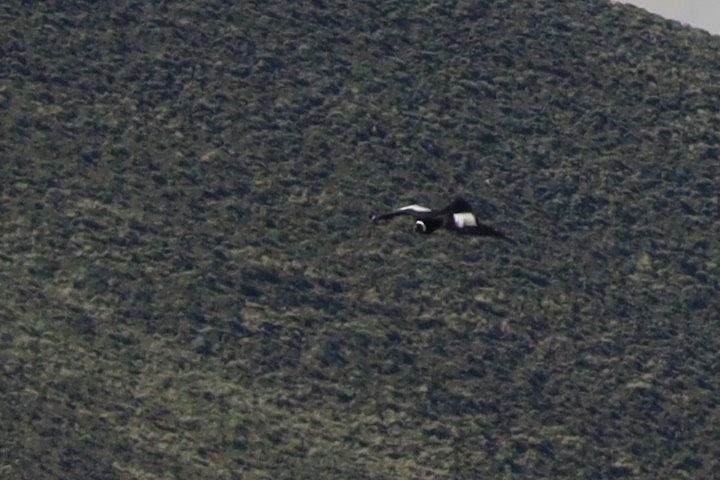 Both condor types are very large broad-winged soaring birds, the Andean condor being 3 in (8 cm) to 6 in shorter (beak to tail) on average than the northern species, but heavier and larger in wingspan. The Andean condor has a wingspan of 274–310 cm (9 ft 0 in – 10 ft 2 in) and even up to about 320 centimetres (10.5 ft) and a weight of 8–15 kg, with males ranging from to 11 to 15 kg (24 to 33 lb) and females 7.5 to 11 kg (17 to 24 lb).
Both condor types are very large broad-winged soaring birds, the Andean condor being 3 in (8 cm) to 6 in shorter (beak to tail) on average than the northern species, but heavier and larger in wingspan. The Andean condor has a wingspan of 274–310 cm (9 ft 0 in – 10 ft 2 in) and even up to about 320 centimetres (10.5 ft) and a weight of 8–15 kg, with males ranging from to 11 to 15 kg (24 to 33 lb) and females 7.5 to 11 kg (17 to 24 lb).
Among all living flying birds, the Andean condor is the third heaviest after the Kori bustard and great bustard (up to 21 kg or 46 lb), and second only to the wandering albatross (up to 3.5 m or 11 ft 6 in) in wingspan. Measurements are usually taken from specimens reared in captivity.
Soon more condors followed…
It became a bit of a sport to try and photograph their distinguishing white markings which are only visible on the upper side of their wings and as a white collar around their neck.
The spectacle of such a large bird soaring above you abd above the Andes Moutain peaks is really a majestic sight to watch, leaving lots of people in awe…
They perform quite an acrobatic show up there, using the rising thermal winds the best way they can. Some of the condors were returning to their nests high above, glued to the vertical mountain slopes…
These nests were unreachable for almost every animal including humans in the world and thus the very best protection that they could provide for their eggs or their young chicks …
The adult plumage is uniformly black, with the exception of a frill of white feathers nearly surrounding the base of the neck which are meticulously kept clean by the bird. As an adaptation for hygiene, the condor’s head and neck have few feathers, which exposes the skin to the sterilizing effects of dehydration and solar ultraviolet light at high altitudes. The head is much flattened above. In the male it is crowned with a caruncle or comb, while the skin of the neck in the male lies in folds, forming a wattle. The skin of the head and neck is capable of flushing noticeably in response to emotional state, which serves to communicate between individuals.
Sexual maturity and breeding behavior do not appear in the condor until 5 or 6 years of age. They may live for 50 years or more, and mate for life. The world’s oldest condor died at 100 in the Jardin d’Essai du Hamma in Algiers.
The young are covered with a grayish down until they are almost as large as their parents. They are able to fly after six months, but continue to roost and hunt with their parents until age two, when they are displaced by a new clutch. There is a well-developed social structure within large groups of condors; a recent study showed the ‘pecking order’ is determined by age group and, within age groups, by sex (which contradicts previous findings).
The lack of a large sternum to anchor correspondingly large flight muscles identifies it physiologically as a primary soarer. The birds flap their wings on rising from the ground, but after attaining a moderate elevation they seem to sail on the air, transiting from one upstream to the next often without flapping its wings. One Andean condor was recording maintaining such flight for 171 kilometers (106 mi), for over five hours.
Wild condors inhabit large territories, often traveling 250 km (160 mi) a day in search of carrion. They prefer large carcasses such as deer or cattle which they spot by looking for other scavengers, which cannot rip through the tougher hides of these larger animals with the efficiency of the larger condor. In the wild they are intermittent eaters, often going for a few days without eating, then gorging themselves on several kilograms (pounds) at once, sometimes to the point of being unable to lift off the ground.
The Wandelgek spend hours photgraphing these majestic birds and trying to make the perfect picture of them showing their white marked back, but when finally one bird decided to really show off, the fierce wind of Patagonia interfered …
Ah well, those are the mishaps is a photographers life 🤣
After this, The Wandelgek returned to the junction of the trails and took the trail named Mirador Las Aguilas, which was also highly recommended for viewing condors. Both trails did not require registration at the visitor center, because they were relatively easy if you have a decent physical condition.
The Laguna Toro trail however does require registration. This registration is needed because apart from the trail itself being morevdifficult and much longer, it is a proven fact that even experienced hikers get into trouble because of the earlier mentioned wind which can appear by surprise and is forceful enough to wipe a mature man from his feet. If this happens on a steep mountain trail, e.g. near a crevasse or ravine, than everyone can get into severe trouble.
But this was an easy trail and maybe that was a good thing because The Wandelgek and everyone else was looking towards the sky a lot to spot condors. Not a situation in which a difficult trail is appreciated much…
It was still late Spring and the condors were feeding their young chicks while all sorts of flowers were blooming everywhere…
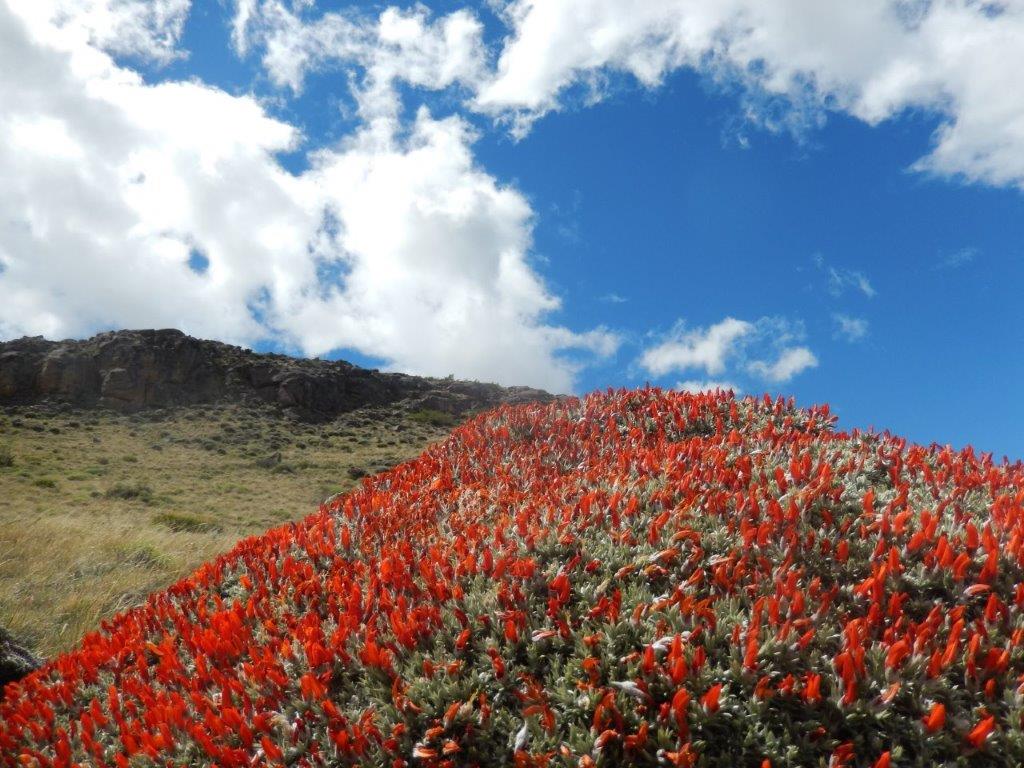 The trail ended at the Mirador de las Aguilas-sign. The views from there were absolutely fabulous …
The trail ended at the Mirador de las Aguilas-sign. The views from there were absolutely fabulous …
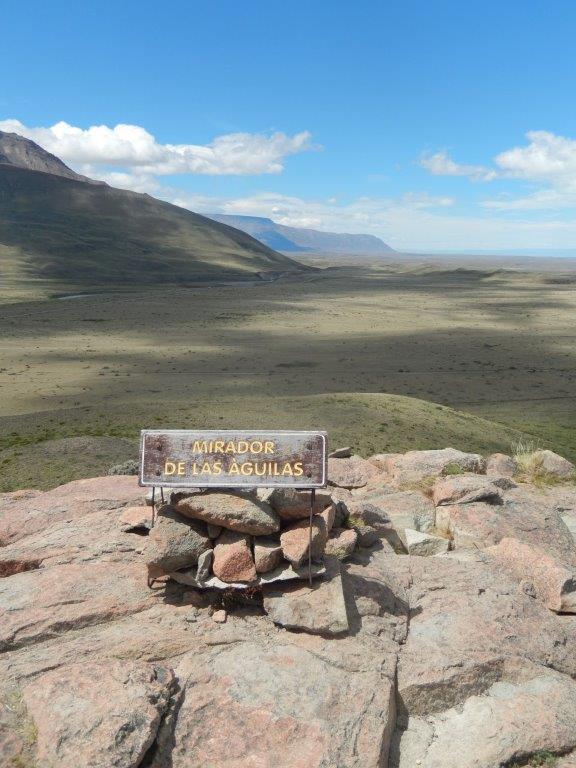 The clouds were playing with the sunlight on the playground before me…
The clouds were playing with the sunlight on the playground before me…
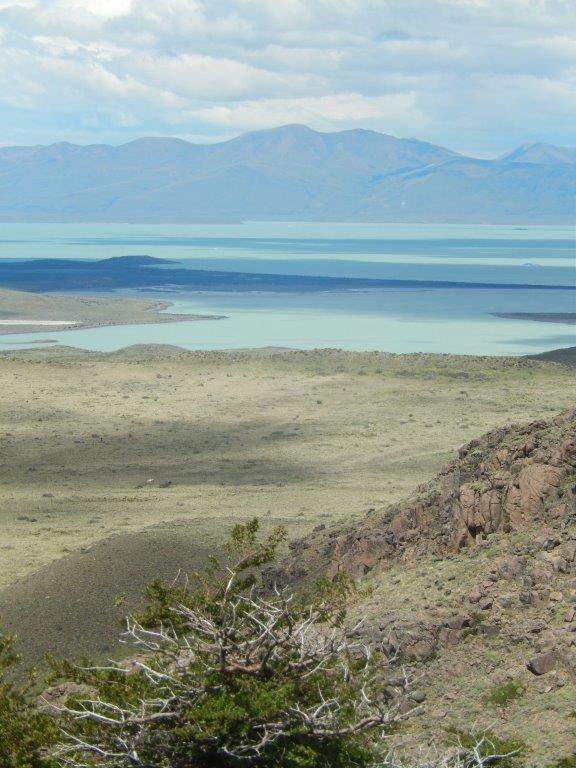 The wind was like a beast which is why I’m wearing my hoody here …
The wind was like a beast which is why I’m wearing my hoody here …
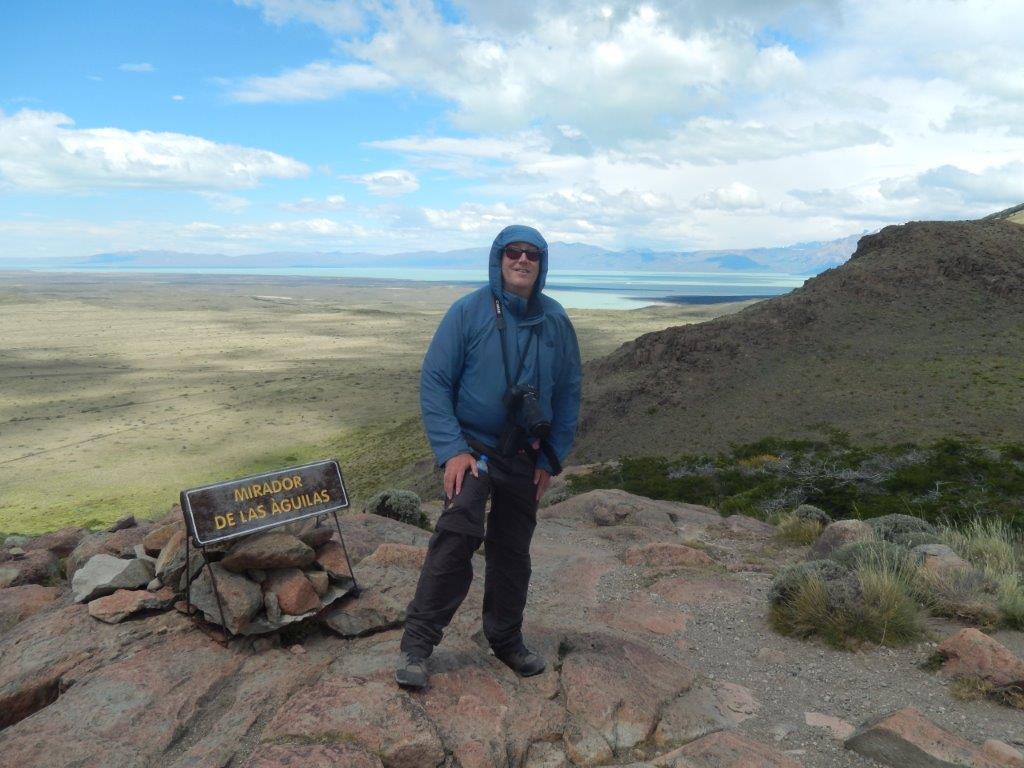 The colors were strange, like the dark pink mountains far away on the other shore of Lago Viedma …
The colors were strange, like the dark pink mountains far away on the other shore of Lago Viedma …
Lago Viedma is together with Lago O’Higgins and Lago Argentino, one of three large lakes, fed by very large glaciers running down from the southern patagonian icefield…
The color patterns of nature can become like art and this was such a place where they were like art…
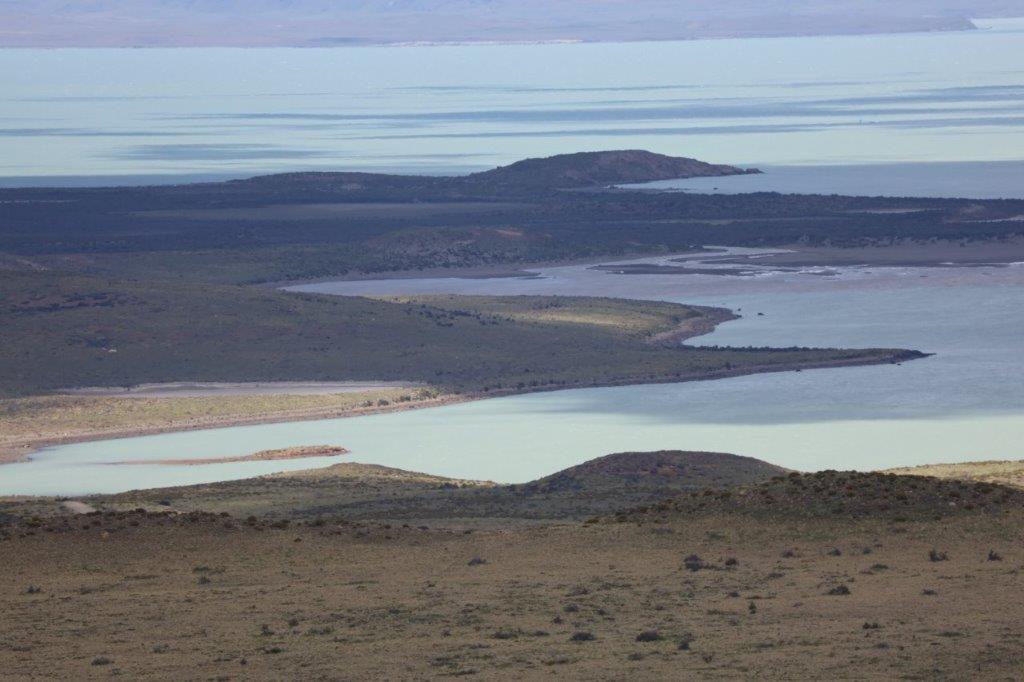 In the foreground was a small lagoon or bay like area and behind that was the larger lake…
In the foreground was a small lagoon or bay like area and behind that was the larger lake…
A small twister was roaming along the coast line…
A peculiar lenticular cloud (altocumulus lenticularis) was hanging in mid air …
It was quite awesome to see and feel all these weather and nature phenomena…
… and this also included the really strong wind which was a continuous factor this far south…
Above all of this the Condor passes by…
… searching for food for themselves but also for their young ones …
The birds really have a majestic air about them…
After having sped several hours of walking and photographing on the trails at viewpoints near the steep rocky cliffs where the Condors build their nests, The Wandelgek had returned to the visitor center area near El Chalten and he had packed his cameras in his backpack, when he suddenly heard a girl yell: “Condors!!!”. He turned around and now saw two condors flying high above the Andes rmountain range and he immediately unpacked his cameras and started shooting some of the most beautiful photos due to the mountains being visible as a mesmerizing backdrop…
El Condor Pasa… The Wandelgek had to react extremely fast to make this picture of which the result is astounding. He was making a series of some condors hovering above and in front of a gorgeous section of the Andes mountain range, when suddenly one condor decided to fly lower and he almost instinctively zoomed in and was able to make this single shot…
Then The Wandelgek returned to El Chalten and slowly walked to his hotel, because he was going to leave El Chalten.

